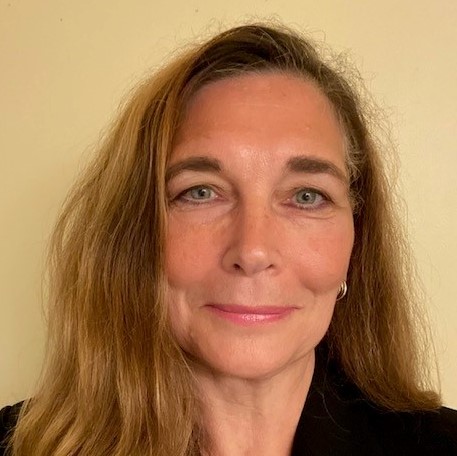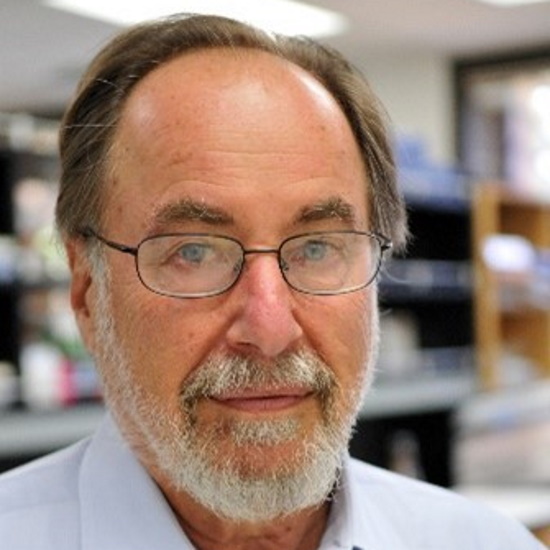Science in the interests of justice
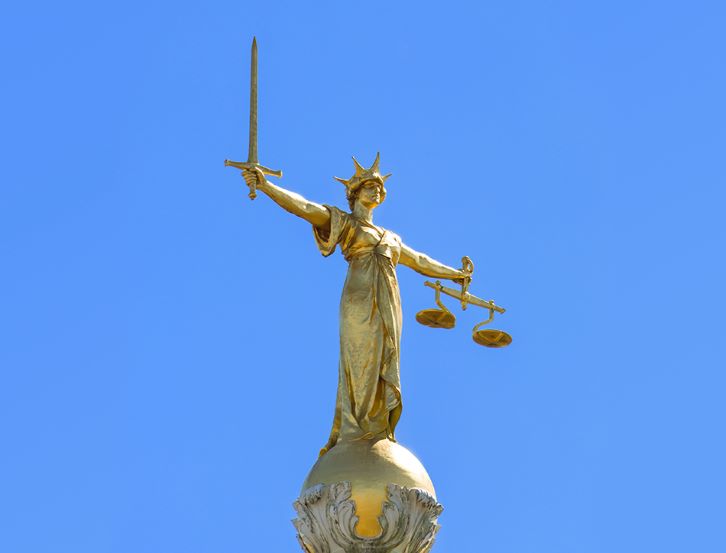
This meeting brought together leading scientists and prominent members of the legal community from the UK and USA to explore approaches used by courts in their consideration, evaluation, and management of scientific evidence and expert witnesses.
The conference considered scientific evidence that appears in court today as well as emerging areas of science, including neuroscience, human enhancement and climate change attribution, that may appear in the courts in the coming years.
The conference was part of the Science and Law programmes at the National Academy of Sciences and the Royal Society. Find out more about the Royal Society's Science and the Law programme and the National Academy of Sciences' Committee on Science, Technology and Law.
The conference was led by:
- David Baltimore, President Emeritus and Judge Shirley Hufstedler Professor of Biology, the California Institute of Technology
- Lord Anthony Hughes of Ombersley PC, former judge of the Supreme Court of the United Kingdom
- Dr Julie Maxton CBE, Executive Director of the Royal Society
- Dr Anne-Marie Mazza, Senior Director of the National Academy of Sciences
- Judge David Tatel, US Court of Appeals for the DC Circuit
- Dame Anne Rafferty DBE, former Lady Justice of Appeal of England and Wales
It is hoped that this will be the first in a series of joint international Science and Law meetings in the coming years.
View the recording
Click watch on YouTube to view the full video playlist.
Interested in a career at the interface between science and the law?
The Royal Society hosted a satellite event exploring the career opportunities within science and the law. The workshop featured talks from scientists, professionals in the police force and lawyers, highlighting the mobility between the two sectors and the pathway into their current careers, followed by a panel discussion and Q&A session.
Organisers
Schedule
| 09:00-09:05 |
Welcome from the President of the Royal Society
Sir Adrian SmithPresident, the Royal Society Sir Adrian SmithPresident, the Royal Society Adrian Smith became President of the Royal Society on 30 November 2020. He is also Institute Director and Chief Executive of The Alan Turing Institute. He is a mathematician with expertise in Bayesian statistics. This branch of mathematics represents uncertainties in the form of probabilities, which are then modified through the mechanism of Bayes theorem as new information becomes available. Adrian's comprehensive publications on diverse areas of Bayesian statistics have had a major impact on statistical practice in a wide range of disciplines and application areas. Between 2008-2012, he was Director General, Knowledge and Innovation in BIS (now BEIS) and has previously worked with the UK Higher Education Funding and Research Councils. Adrian is Chair of the Board of the Diamond Light Source and is also a board member of the UK Atomic Energy Authority. In 2017, he carried out a review of the maths curriculum for 16-18 year olds for the Treasury and Department for Education. In the 2011 New Year Honours list, he was awarded the title of Knight Bachelor. |
|---|---|
| 09:05-09:10 |
Welcome from the President of the National Academy of Sciences
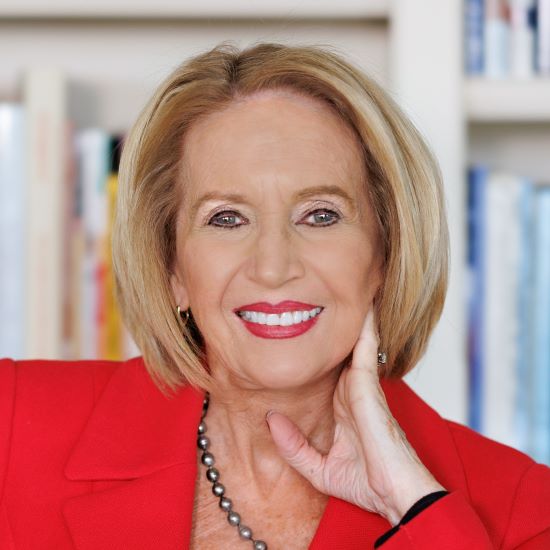
Dr Marcia McNuttPresident, the National Academy of Sciences, US 
Dr Marcia McNuttPresident, the National Academy of Sciences, US Marcia McNutt (BA in Physics, Colorado College; PhD in Earth sciences, Scripps Institution of Oceanography) is a geophysicist and the 22nd president of the National Academy of Sciences. From 2013 to 2016, she was editor-in-chief of Science journals. Professor McNutt was director of the US Geological Survey from 2009 to 2013, during which time USGS responded to a number of major disasters, including the Deepwater Horizon oil spill. For her work to help contain that spill, Professor McNutt was awarded the US Coast Guard’s Meritorious Service Medal. She is a fellow of the American Geophysical Union, Geological Society of America, the American Association for the Advancement of Science, and the International Association of Geodesy. Professor McNutt is a member of the National Academy of Engineering, the American Philosophical Society and the American Academy of Arts and Sciences, a Foreign Member of the Royal Society (UK), the Russian Academy of Sciences, the Chinese Academy of Sciences and a Foreign Fellow of the Indian National Science Academy. In 1998, Professor McNutt was awarded the AGU's Macelwane Medal for research accomplishments by a young scientist, and she received the Maurice Ewing Medal in 2007 for her contributions to deep-sea exploration. |
Chair
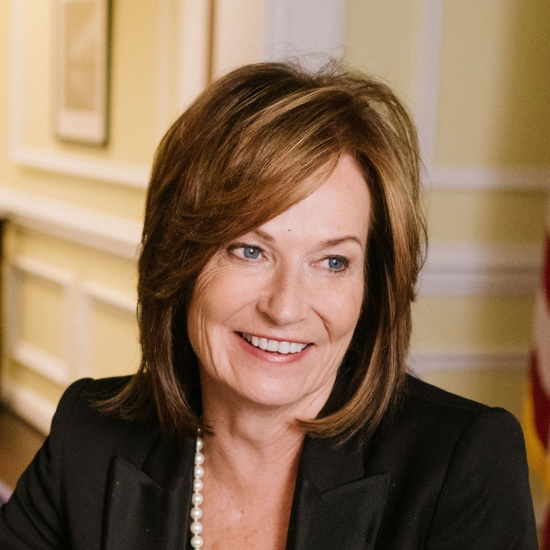
Judge Kathleen O'Malley
Sullivan & Cromwell LLP, US

Judge Kathleen O'Malley
Sullivan & Cromwell LLP, US
Kathleen O'Malley is Of Counsel with Sullivan & Cromwell, LLP in the firm's Intellectual Property (IP) & Technology Litigation practice, advising on a broad range of subject matters, including all forms of IP litigation, engaging in alternative dispute resolution, and intellectual property policy work. Judge O'Malley was a federal judge for more than 27 years, including most recently serving on the US Court of Appeals for the Federal Circuit, the only court that handles appeals of patent cases. She also previously served as first assistant and chief of staff to the Ohio Attorney General.
In addition to her patent expertise, Judge O'Malley has substantial experience with other IP issues - copyright, trademark, trade secret, and the intersection of IP and antitrust - and with other areas of federal law, including securities fraud, tax matters, multi-district litigation and white-collar criminal prosecutions.
Judge O'Malley has received numerous awards over her career, such as the Sedona Conference Lifetime Achievement Award and the Intellectual Property Owners Association Distinguished IP Professional Award. She was also inducted into the IAM IP Hall of Fame by Intellectual Asset Management and was named a lifetime honorary member of the Association of Corporate Patent Counsel.
Judge O'Malley regularly lectures on various IP topics, including the importance of IP to innovation and the importance of innovation to the economy, and has trained judges, lawyers and stakeholders on the US IP system in over a dozen countries around the world.
| 09:15-09:35 |
A view from the UK judiciary

Anthony Hughes, Lord Hughes of OmbersleyFormer Judge of the Supreme Court, UK 
Anthony Hughes, Lord Hughes of OmbersleyFormer Judge of the Supreme Court, UK After studying at Van Mildert College, Durham, Lord Hughes briefly lectured in law at Durham and Queen Mary College London before going to the Bar in Birmingham chambers in 1971. He took silk in 1990, having been for a few years before that as a Recorder (part time judge). From 1997 until 2018 he was a full-time judge, successively in the Family Division, the Queen’s Bench Division, the Court of Appeal (where he was Vice President of the Criminal Division) and the Supreme Court. Lord Hughes retired under the standard age rules in 2018. He is currently a Judicial Commissioner for the Investigatory Powers Commission and Chairman of the public inquiry into the apparent Novichok poisoning in the Salisbury area in 2018 that led to the death of Dawn Sturgess. He is also highly involved in the Royal Society’s Science and the law programme. He currently lives in Worcestershire, where he is an active charity trustee. He attempts to remain approximately sane through efforts in the garden, bellringing, and veteran rowing. He is married to a former biochemist, and they have two grown-up children. |
|---|---|
| 09:35-09:45 |
A view from the US judiciary
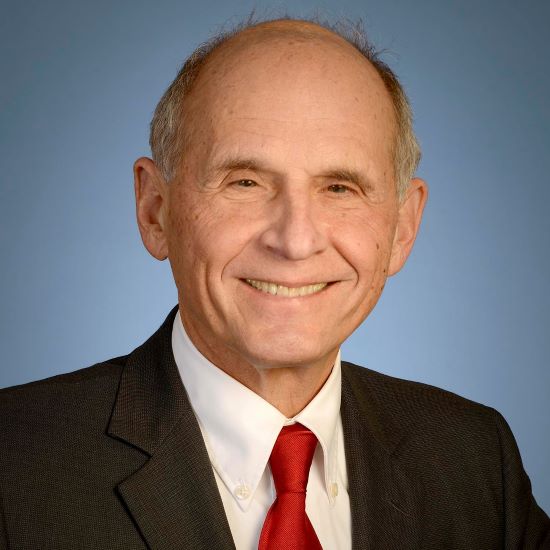
Judge David S TatelUS Court of Appeals for the DC Circuit, US 
Judge David S TatelUS Court of Appeals for the DC Circuit, US David S Tatel was appointed to the US Court of Appeals for the District of Columbia Circuit in October 1994. He previously served as Director of the National Lawyers' Committee for Civil Rights Under Law and Director of the Office for Civil Rights of the US Department of Health, Education and Welfare during the Carter Administration. In private practice, Judge Tatel founded and headed Hogan & Hartson's education practice until his appointment by President Clinton to the DC Circuit. Judge Tatel previously co-chaired the National Academy of Sciences' Committee on Science, Technology, and Law, and he is a member of the American Philosophical Society. Judge Tatel is also a member of the Committee on Science for Judges, a collaboration by CSTL and the Federal Judicial Center, working on the update and revision of the Reference Manual on Scientific Evidence, Fourth Edition. |
| 09:45-09:50 |
Comments from the Chair

Judge Kathleen O'MalleySullivan & Cromwell LLP, US 
Judge Kathleen O'MalleySullivan & Cromwell LLP, US Kathleen O'Malley is Of Counsel with Sullivan & Cromwell, LLP in the firm's Intellectual Property (IP) & Technology Litigation practice, advising on a broad range of subject matters, including all forms of IP litigation, engaging in alternative dispute resolution, and intellectual property policy work. Judge O'Malley was a federal judge for more than 27 years, including most recently serving on the US Court of Appeals for the Federal Circuit, the only court that handles appeals of patent cases. She also previously served as first assistant and chief of staff to the Ohio Attorney General. In addition to her patent expertise, Judge O'Malley has substantial experience with other IP issues - copyright, trademark, trade secret, and the intersection of IP and antitrust - and with other areas of federal law, including securities fraud, tax matters, multi-district litigation and white-collar criminal prosecutions. Judge O'Malley has received numerous awards over her career, such as the Sedona Conference Lifetime Achievement Award and the Intellectual Property Owners Association Distinguished IP Professional Award. She was also inducted into the IAM IP Hall of Fame by Intellectual Asset Management and was named a lifetime honorary member of the Association of Corporate Patent Counsel. Judge O'Malley regularly lectures on various IP topics, including the importance of IP to innovation and the importance of innovation to the economy, and has trained judges, lawyers and stakeholders on the US IP system in over a dozen countries around the world. |
| 09:55-10:30 |
Panel discussion

Anthony Hughes, Lord Hughes of OmbersleyFormer Judge of the Supreme Court, UK 
Anthony Hughes, Lord Hughes of OmbersleyFormer Judge of the Supreme Court, UK After studying at Van Mildert College, Durham, Lord Hughes briefly lectured in law at Durham and Queen Mary College London before going to the Bar in Birmingham chambers in 1971. He took silk in 1990, having been for a few years before that as a Recorder (part time judge). From 1997 until 2018 he was a full-time judge, successively in the Family Division, the Queen’s Bench Division, the Court of Appeal (where he was Vice President of the Criminal Division) and the Supreme Court. Lord Hughes retired under the standard age rules in 2018. He is currently a Judicial Commissioner for the Investigatory Powers Commission and Chairman of the public inquiry into the apparent Novichok poisoning in the Salisbury area in 2018 that led to the death of Dawn Sturgess. He is also highly involved in the Royal Society’s Science and the law programme. He currently lives in Worcestershire, where he is an active charity trustee. He attempts to remain approximately sane through efforts in the garden, bellringing, and veteran rowing. He is married to a former biochemist, and they have two grown-up children. 
Judge David S TatelUS Court of Appeals for the DC Circuit, US 
Judge David S TatelUS Court of Appeals for the DC Circuit, US David S Tatel was appointed to the US Court of Appeals for the District of Columbia Circuit in October 1994. He previously served as Director of the National Lawyers' Committee for Civil Rights Under Law and Director of the Office for Civil Rights of the US Department of Health, Education and Welfare during the Carter Administration. In private practice, Judge Tatel founded and headed Hogan & Hartson's education practice until his appointment by President Clinton to the DC Circuit. Judge Tatel previously co-chaired the National Academy of Sciences' Committee on Science, Technology, and Law, and he is a member of the American Philosophical Society. Judge Tatel is also a member of the Committee on Science for Judges, a collaboration by CSTL and the Federal Judicial Center, working on the update and revision of the Reference Manual on Scientific Evidence, Fourth Edition. Professor Niamh NicDaeid FRSE, University of Dundee, UK
Professor Niamh NicDaeid FRSE, University of Dundee, UKProfessor Niamh Nic Daeid is a Chartered Chemist and authorised forensic scientist. She is a Professor of Forensic Science and Director of the Leverhulme Research Centre for Forensic Science at the University of Dundee. She is a Fellow of the Royal Society of Edinburgh and holds fellowships of the Royal Society of Chemistry, the Chartered Society of Forensic Science, the Institute of Chemistry of Ireland, the Royal Statistical Society and the UK Association of Fire Investigators. She has held leadership positions with the European Network of Forensic Science Institutes (ENFSI) as a past chair of the fire and explosion investigation working group and as vice chair of the scientific advisory board of the International Criminal Court for 6 years. She is a forensic expert advisor to the United Nations Office of Drugs and Crime (UNODC) and is also vice chair of the Dundee Drugs Commission investigating drug related deaths in Dundee. 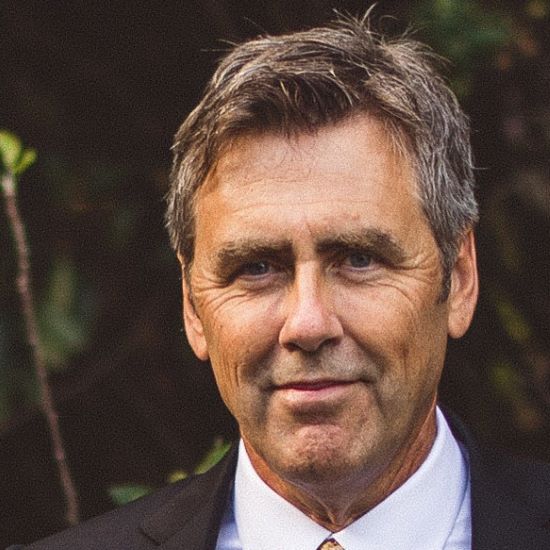
Professor Thomas D AlbrightVision Center Laboratory, Salk Institute for Biological Studies, CA, US 
Professor Thomas D AlbrightVision Center Laboratory, Salk Institute for Biological Studies, CA, US Thomas D Albright is Professor and Conrad T Prebys Chair at the Salk Institute for Biological Studies. He is an authority on the neural basis of visual perception, memory and visually guided behaviour. An important goal of Professor Albright's work is the development of therapies for perceptual impairments resulting from disease, trauma, or developmental disorders of the brain. A second aim of his work is to use growing knowledge of brain, perception, and memory to inform societal decisions. Professor Albright received a PhD in psychology and neuroscience from Princeton University. He is a member of the US National Academy of Sciences (NAS), a fellow of the American Academy of Arts and Sciences, and a fellow of the American Association for the Advancement of Science. Professor Albright served on the NAS Committee on Science, Technology, and Law, on the National Commission on Forensic Science (an advisory body to the US Department of Justice), and on the human factors committee of the Organization of Scientific Area Committees for Forensic Science. He has also served as co-chair of the NAS Committee on Scientific Approaches to Eyewitness Identification, which produced the 2014 report Identifying the Culprit: Assessing Eyewitness Identification. |
Chair
Professor Dame Sue Black DBE FRSE, The Baroness Black of Strome, Lancaster, UK
Professor Dame Sue Black DBE FRSE, The Baroness Black of Strome, Lancaster, UK
Baroness Black is the Pro Vice Chancellor for Engagement at Lancaster University. She is a forensic anthropologist, an anatomist and President of the Royal Anthropological Institute.
She is a fellow of the Royal Society of Edinburgh, a Fellow of the Royal Anthropological Institute, a Fellow of the Royal College of Physicians (Edinburgh), a Fellow of the Royal Society of Biology, a Fellow of the British Academy and a chartered forensic anthropologist. She was awarded an OBE in 2001 for her services to forensic anthropology in Kosovo and a DBE in 2016 for her services to forensic anthropology and education.
| 11:05-11:35 |
Forensic science – our past, present and future
This presentation will provide an overview of forensic science and the principles behind its role within the justice systems. It will explore some of the opportunities and limitations of the use of science from the crime scene to the court room and the, sometimes, challenging positioning of emerging technologies particularly as we move further and faster into a digitally connected world. Critical aspects such as the development of data sets, including that generated by citizens, the rise of open science, the importance of ethics and the necessity of clear communication of science across the interdisciplinary landscape, will be amongst the range of topics touched upon. Professor Niamh NicDaeid FRSE, University of Dundee, UK
Professor Niamh NicDaeid FRSE, University of Dundee, UKProfessor Niamh Nic Daeid is a Chartered Chemist and authorised forensic scientist. She is a Professor of Forensic Science and Director of the Leverhulme Research Centre for Forensic Science at the University of Dundee. She is a Fellow of the Royal Society of Edinburgh and holds fellowships of the Royal Society of Chemistry, the Chartered Society of Forensic Science, the Institute of Chemistry of Ireland, the Royal Statistical Society and the UK Association of Fire Investigators. She has held leadership positions with the European Network of Forensic Science Institutes (ENFSI) as a past chair of the fire and explosion investigation working group and as vice chair of the scientific advisory board of the International Criminal Court for 6 years. She is a forensic expert advisor to the United Nations Office of Drugs and Crime (UNODC) and is also vice chair of the Dundee Drugs Commission investigating drug related deaths in Dundee. |
|---|---|
| 11:35-12:00 |
DNA mixture evidence: an example of the process to determine reliability
The molecular biology and chemistry behind the generation of DNA profiles is robust. Sensitivity of detection has increased substantially over the years, such that only a few cells' worth of DNA can be sufficient to obtain interpretable data. However, the quality and quantity of biological evidence can be limiting - especially so with complex mixture evidence. Interpretation of mixtures requires the consideration of several aspects, many of which are based on generally accepted principles, supported by the peer-reviewed scientific literature, and demonstrated by on-site, internal validation studies conducted by a laboratory's technical staff. These 'aspects' include the results' scientific defensibility, validity, uncertainty, limitations, transparency, documentation, disclosure, bias, error rates vs error, in addition to the education and training gaps of those involved in collecting, measuring and interpreting results. Although there is no standard approach for mixture interpretation, there are accepted practices within an approach. If these practices are followed, results can be scientifically defensible. However, misapplications have occurred, primarily due to technology transfer gaps, training limitations, misunderstandings, bias, transparency and quality assurance issues. These limitations pose challenges for the legal system to determine the validity of a methodology and the reliability of results presented in a report, case file, and/or during testimony. Forensic DNA analyses can be arcane for non-scientists, but there are various aspects that can be scrutinised to assist the trier of fact and their gate keeper responsibility to determine the robustness of the science and expertise of scientists. All science has limitations. It is incumbent upon practitioners to define, understand, and communicate these limitations so results are not overstated (as well as not overly understated). DNA mixture evidence from the laboratory to the courtroom is a good example for showcasing aspects important for assessing the reliability of - or at least gaining confidence in - the results presented. 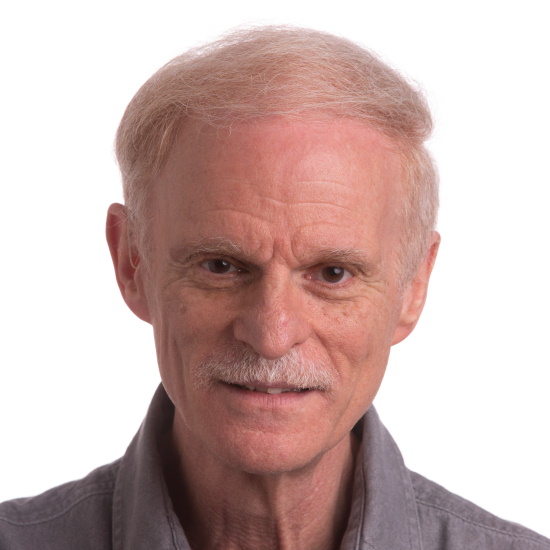
Professor Bruce BudowleUniversity of North Texas, US 
Professor Bruce BudowleUniversity of North Texas, US Dr Bruce Budowle received a PhD in Genetics in 1979 from Virginia Polytechnic Institute and State University. From 1979-1982, Dr Budowle was a postdoctoral fellow at the University of Alabama at Birmingham. Working under a National Cancer Institute fellowship, he carried out research predominately on genetic risk factors for diseases such as insulin-dependent diabetes mellitus, melanoma and acute lymphocytic leukaemia. From 1983-2009, Dr Budowle worked at the FBI’s Laboratory Division to carry out research, development and validation of methods for forensic biological analyses. He has published more than 700 articles, made more than 800 presentations and testified in well over 300 criminal cases in the areas of molecular biology, population genetics, statistics, quality assurance and forensic biology. In addition, he has authored or co-authored books on molecular biology techniques, electrophoresis, protein detection, forensic genetics and microbial forensics. Dr Budowle recently retired as Director of the Center for Human Identification and Regents Professor at the University of North Texas Health Science Center at Fort Worth, Texas where his efforts focused on the areas of human forensic identification, microbial forensics and emerging infectious disease with substantial emphasis in genomics and next generation sequencing. He continues to research and work in the areas of forensic genomics and contributes to supporting humanitarian efforts via human identification. He currently is a visiting professor in the Department of Forensic Medicine at the University of Helsinki and an adjunct professor in the Forensic Science Institute at Radford University. |
| 12:00-12:25 |
Voice recognition
Voice recognition is the process by which distinctive characteristics of an individual's speech are used to identify or verify who they are. As lay listeners, humans recognise familiar voices intuitively in an everyday sense and may also find themselves being 'earwitnesses' to a crime, albeit rarely. When carried out by trained practitioners using specialised methodologies and tools, voice recognition, comparing often unknown speech samples, can play an important role in investigative and forensic contexts. This talk will consider the landscape of forensic voice recognition, encompassing auditory analysis by trained listeners, acoustic-phonetic measurements of perceptually salient features, and automatic speaker recognition using signal processing and modelling algorithms that are statistical or based on deep neural networks. The Bayesian likelihood ratio framework will be critically examined as a means of evaluating the strength of evidence using any voice analysis methodology. The importance of validation of the prevalent and emerging approaches, to understand their limitations and to provide reliable and transparent reports to the courts, will be discussed. Additionally, the varying acceptance of voice recognition evidence in different parts of the world will be explored. Anticipating the new challenges posed by machine-created spoofed speech, this talk also will reflect on the risks, mitigations and, more optimistically, emerging opportunities afforded by using both human- and machine-based analysis. 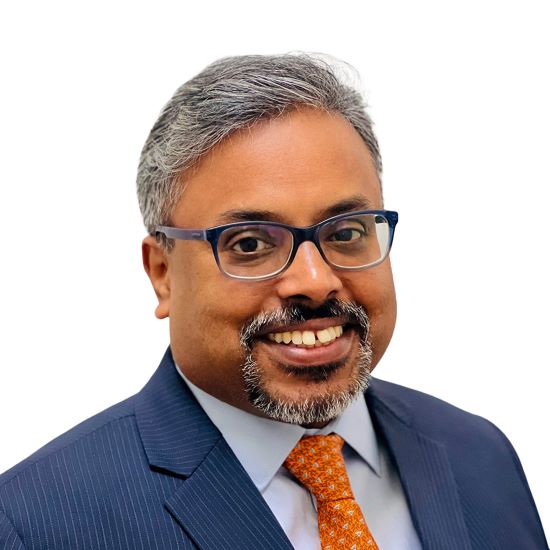
Dr Anil AlexanderOxford Wave Research 
Dr Anil AlexanderOxford Wave Research Dr Anil Alexander is an expert in forensic voice and speaker recognition and is the CEO and co-founder of Oxford Wave Research, a company that has developed a speaker recognition system used in forensic laboratories around the world. Dr Alexander has a PhD (2005) in forensic automatic speaker recognition from the Swiss Federal Institute of Technology, Lausanne (EPFL). His doctoral work focussed on quantifying the strength of voice evidence in mismatched recording conditions and was in close collaboration with the Faculty of Law and Criminal Sciences at the University of Lausanne (UNIL), Switzerland. He has also served as an expert in forensic audio and speaker recognition cases. Dr Alexander is currently an external PhD co-supervisor at the University of Cambridge in the areas of voice similarity and voice spoofing by humans and machines. He is also an affiliate member of the NIST (National Institute of Standards, USA) OSAC Speaker Recognition Subcommittee, where he contributes to developing standards and guidelines for forensic speaker recognition. He has also previously chaired the Research Committee of the International Association for Forensic Phonetics and Acoustics (IAFPA). His 'open box' design philosophy centres around creating real-world forensic software systems that allow forensic scientists to look inside, observe and understand how these systems work. |
Chair
Professor Dame Sue Black DBE FRSE, The Baroness Black of Strome, Lancaster, UK
Professor Dame Sue Black DBE FRSE, The Baroness Black of Strome, Lancaster, UK
Baroness Black is the Pro Vice Chancellor for Engagement at Lancaster University. She is a forensic anthropologist, an anatomist and President of the Royal Anthropological Institute.
She is a fellow of the Royal Society of Edinburgh, a Fellow of the Royal Anthropological Institute, a Fellow of the Royal College of Physicians (Edinburgh), a Fellow of the Royal Society of Biology, a Fellow of the British Academy and a chartered forensic anthropologist. She was awarded an OBE in 2001 for her services to forensic anthropology in Kosovo and a DBE in 2016 for her services to forensic anthropology and education.
| 13:25-13:50 |
Bayesian AI
This talk will outline advances in the technology of probabilistic modelling and inference over the last 40 years, from Bayesian networks to open-universe probabilistic programs. Bayesian networks are already a somewhat familiar tool in legal reasoning, although they are somewhat restricted in their ability to express general knowledge and to reason about the existence and identity of objects. Open-universe probabilistic programs, on the other hand, build on the syntax and semantics of first-order logic to provide a general way to answer essentially any answerable question. 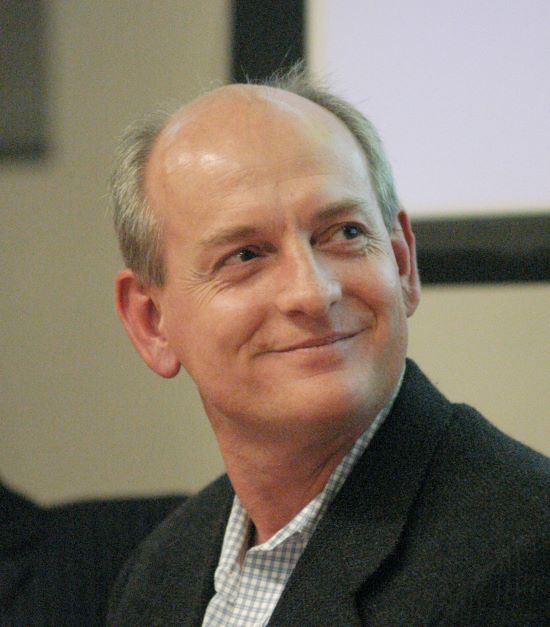
Professor Stuart RussellUniversity of California, Berkeley 
Professor Stuart RussellUniversity of California, Berkeley Stuart Russell is a Professor of Computer Science at the University of California at Berkeley, holder of the Smith-Zadeh Chair in Engineering, and Director of the Center for Human-Compatible AI and the Kavli Center for Ethics, Science, and the Public. He is a recipient of the IJCAI Computers and Thought Award and Research Excellence Award and held the Chaire Blaise Pascal in Paris. In 2021 he received an OBE from Her Majesty Queen Elizabeth and gave the Reith Lectures. He is an Honorary Fellow of Wadham College, Oxford, an Andrew Carnegie Fellow, and a Fellow of the American Association for Artificial Intelligence, the Association for Computing Machinery, and the American Association for the Advancement of Science. His book "Artificial Intelligence: A Modern Approach" (with Peter Norvig) is the standard text in AI, used in 1500 universities in 135 countries. His research covers a wide range of topics in artificial intelligence, with a current emphasis on the long-term future of artificial intelligence and its relation to humanity. He has developed a new global seismic monitoring system for the nuclear-test-ban treaty and is currently working to ban lethal autonomous weapons. |
|---|---|
| 13:50-14:15 |
Forensic science in a virtual reality
Crime scene visualisation has evolved significantly from sketches on paper. Scenes can now be documented digitally, even with panoramic imaging. Advances in imaging technology, including 3D recording devices and virtual reality, hold tremendous opportunities for visualising and presenting crime scenes. However, they also present potentially significant pitfalls. The validation of imaging data collected at the crime scene and understanding measurements within and associated with the 3D models generated from these images are pivotal for avoiding misconceptions if this evolving technology is implemented. This talk will explore the capability of state-of-the-art commercially available technologies to digitalise the scene of a crime and visualise it via immersive head-mounted displays, focusing on the issues relating to evidence acquisition and limitations of current viewing methods. The talk will also discuss potential future technologies. 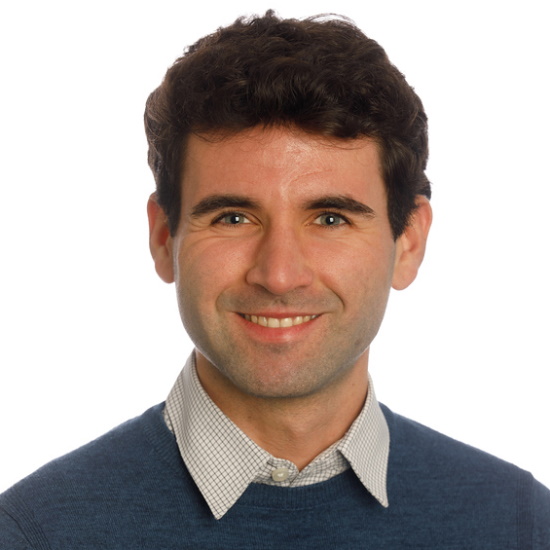
Vincenzo RinaldiUniversity of Dundee, UK 
Vincenzo RinaldiUniversity of Dundee, UK Vincenzo Rinaldi is a VR/AR Application Specialist at the Leverhulme Research Centre for Forensic Science at the University of Dundee, UK. His current research interests deal with innovative ways of 3D imaging and digitalization of the scenes of investigative interest by exploring the implementation of virtual reconstructions in crime scene analysis. This is done by creating acquisition standards and validated methodologies to examine how Extended Reality could aid with training, competence testing and investigations. Vincenzo graduated cum laude with a Master's degree in Software Engineering at the University of Catania in AY 2017-18. After graduation, he worked as a Research and Development Engineer and Full Stack Developer, primarily looking into implementing Extended Reality (XR) to enhance museums, medical education, and security. |
| 14:15-14:40 |
Evaluating digital evidence
Decisions impacting justice have become increasingly reliant on science and technology, motivating advances in digital forensic science. Ongoing efforts in this field include studying scientific foundations and error mitigation analysis. However, this gradual adaptation is not keeping pace with rapidly increasing volume, variety, velocity, distribution, structural intricacy, and complexity of digital data which are strongly impacting the institutions responsible for justice. This talk introduces four initiatives that address the challenge of evaluating and expressing uncertainty of digital evidence: 1) The Digital Investigation Vulnerability Taxonomy, which covers the detection and mitigation of problems, 2) The C-Scale, which helps standardize how evaluative opinions are formed and expressed, 3) The National Institute of Standards and Technology's Artifact Catalog, which collects standard reference data at the speed and rate of change in this area by crowdsourcing expertise and 4) The Cyber Sleuth Science Lab, which educates the future generation of practitioners to deal with the challenges of digital evidence and artificial intelligence |
| 14:40-15:10 |
Panel discussion - research gaps
Professor Niamh NicDaeid FRSE, University of Dundee, UK
Professor Niamh NicDaeid FRSE, University of Dundee, UKProfessor Niamh Nic Daeid is a Chartered Chemist and authorised forensic scientist. She is a Professor of Forensic Science and Director of the Leverhulme Research Centre for Forensic Science at the University of Dundee. She is a Fellow of the Royal Society of Edinburgh and holds fellowships of the Royal Society of Chemistry, the Chartered Society of Forensic Science, the Institute of Chemistry of Ireland, the Royal Statistical Society and the UK Association of Fire Investigators. She has held leadership positions with the European Network of Forensic Science Institutes (ENFSI) as a past chair of the fire and explosion investigation working group and as vice chair of the scientific advisory board of the International Criminal Court for 6 years. She is a forensic expert advisor to the United Nations Office of Drugs and Crime (UNODC) and is also vice chair of the Dundee Drugs Commission investigating drug related deaths in Dundee. 
Professor Bruce BudowleUniversity of North Texas, US 
Professor Bruce BudowleUniversity of North Texas, US Dr Bruce Budowle received a PhD in Genetics in 1979 from Virginia Polytechnic Institute and State University. From 1979-1982, Dr Budowle was a postdoctoral fellow at the University of Alabama at Birmingham. Working under a National Cancer Institute fellowship, he carried out research predominately on genetic risk factors for diseases such as insulin-dependent diabetes mellitus, melanoma and acute lymphocytic leukaemia. From 1983-2009, Dr Budowle worked at the FBI’s Laboratory Division to carry out research, development and validation of methods for forensic biological analyses. He has published more than 700 articles, made more than 800 presentations and testified in well over 300 criminal cases in the areas of molecular biology, population genetics, statistics, quality assurance and forensic biology. In addition, he has authored or co-authored books on molecular biology techniques, electrophoresis, protein detection, forensic genetics and microbial forensics. Dr Budowle recently retired as Director of the Center for Human Identification and Regents Professor at the University of North Texas Health Science Center at Fort Worth, Texas where his efforts focused on the areas of human forensic identification, microbial forensics and emerging infectious disease with substantial emphasis in genomics and next generation sequencing. He continues to research and work in the areas of forensic genomics and contributes to supporting humanitarian efforts via human identification. He currently is a visiting professor in the Department of Forensic Medicine at the University of Helsinki and an adjunct professor in the Forensic Science Institute at Radford University. 
Vincenzo RinaldiUniversity of Dundee, UK 
Vincenzo RinaldiUniversity of Dundee, UK Vincenzo Rinaldi is a VR/AR Application Specialist at the Leverhulme Research Centre for Forensic Science at the University of Dundee, UK. His current research interests deal with innovative ways of 3D imaging and digitalization of the scenes of investigative interest by exploring the implementation of virtual reconstructions in crime scene analysis. This is done by creating acquisition standards and validated methodologies to examine how Extended Reality could aid with training, competence testing and investigations. Vincenzo graduated cum laude with a Master's degree in Software Engineering at the University of Catania in AY 2017-18. After graduation, he worked as a Research and Development Engineer and Full Stack Developer, primarily looking into implementing Extended Reality (XR) to enhance museums, medical education, and security. 
Professor Stuart RussellUniversity of California, Berkeley 
Professor Stuart RussellUniversity of California, Berkeley Stuart Russell is a Professor of Computer Science at the University of California at Berkeley, holder of the Smith-Zadeh Chair in Engineering, and Director of the Center for Human-Compatible AI and the Kavli Center for Ethics, Science, and the Public. He is a recipient of the IJCAI Computers and Thought Award and Research Excellence Award and held the Chaire Blaise Pascal in Paris. In 2021 he received an OBE from Her Majesty Queen Elizabeth and gave the Reith Lectures. He is an Honorary Fellow of Wadham College, Oxford, an Andrew Carnegie Fellow, and a Fellow of the American Association for Artificial Intelligence, the Association for Computing Machinery, and the American Association for the Advancement of Science. His book "Artificial Intelligence: A Modern Approach" (with Peter Norvig) is the standard text in AI, used in 1500 universities in 135 countries. His research covers a wide range of topics in artificial intelligence, with a current emphasis on the long-term future of artificial intelligence and its relation to humanity. He has developed a new global seismic monitoring system for the nuclear-test-ban treaty and is currently working to ban lethal autonomous weapons. 
Dr Anil AlexanderOxford Wave Research 
Dr Anil AlexanderOxford Wave Research Dr Anil Alexander is an expert in forensic voice and speaker recognition and is the CEO and co-founder of Oxford Wave Research, a company that has developed a speaker recognition system used in forensic laboratories around the world. Dr Alexander has a PhD (2005) in forensic automatic speaker recognition from the Swiss Federal Institute of Technology, Lausanne (EPFL). His doctoral work focussed on quantifying the strength of voice evidence in mismatched recording conditions and was in close collaboration with the Faculty of Law and Criminal Sciences at the University of Lausanne (UNIL), Switzerland. He has also served as an expert in forensic audio and speaker recognition cases. Dr Alexander is currently an external PhD co-supervisor at the University of Cambridge in the areas of voice similarity and voice spoofing by humans and machines. He is also an affiliate member of the NIST (National Institute of Standards, USA) OSAC Speaker Recognition Subcommittee, where he contributes to developing standards and guidelines for forensic speaker recognition. He has also previously chaired the Research Committee of the International Association for Forensic Phonetics and Acoustics (IAFPA). His 'open box' design philosophy centres around creating real-world forensic software systems that allow forensic scientists to look inside, observe and understand how these systems work. |
| 15:40-15:45 |
Chair's introduction

Lord Justice BirssDeputy Head of Civil Justice 
Lord Justice BirssDeputy Head of Civil Justice Colin Birss is a judge of the Court of Appeal of England and Wales, and Deputy Head of Civil Justice. He graduated from Cambridge University in Natural Sciences (1986), programmed computers for two years, and then studied law. He was called to the English Bar in 1990 and practised in intellectual property law (QC 2008). In 2010 he became a judge, first of the Patents County Court (now IPEC) and then, in 2013, in the High Court. In 2019 he became Judge in Charge of the Patents Court and in 2021 he was appointed to his current roles. He is also an independent judicial member of the EPO Boards of Appeal Committee, General Editor of Terrell on the Law of Patents, a Council member of the UK Foundation for Science and Technology, and serves on the Advisory Group for the Ireland Courts Service Modernisation Programme. |
|---|---|
| 15:45-15:55 |
An introduction to likelihood ratios
This session will introduce the issues of importance when using likelihood ratios in a legal context, and will consider other approaches to reasoning about uncertainty. The speakers will consider the scientist's role in provision of information to help reduce uncertainty while not trespassing into the role of the factfinder, the importance of transparency, the impact of the relevance and adequacy of data available to the scientist, and of avoiding the fallacy of the transposed conditional. While the scientific issues are universal, jurisdictional differences affect whether and how such evidence is presented. The session will touch on what has been observed in court and consider future challenges. 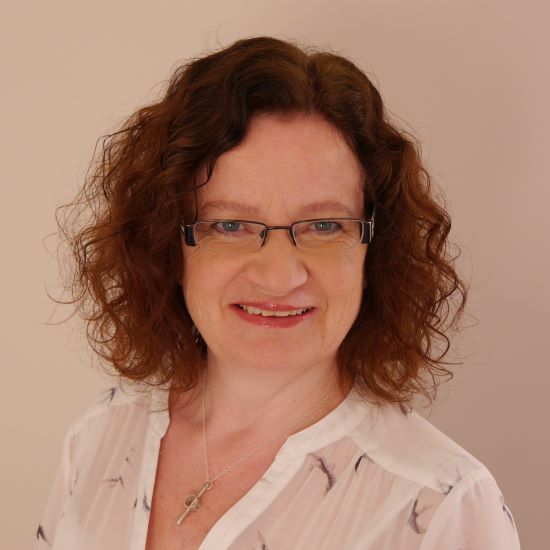
Professor Gill Tully CBEKing's College London, UK 
Professor Gill Tully CBEKing's College London, UK Gill Tully has over 30 years' experience spanning research, casework and regulation in forensic science. She is Professor of Practice for Forensic Science Policy and Regulation at King's College London, in addition to providing training and consultancy services. From November 2014 to February 2021, she was the Forensic Science Regulator for England and Wales, responsible for setting quality standards for forensic science in the Criminal Justice System and for advising and challenging Government. Gill has given evidence to multiple Parliamentary Committees as well as providing expert evidence in courts in England and Wales and overseas. With several granted patents, numerous peer reviewed publications and experience of taking research ideas from inception to court, Gill has a record of effective innovation. She has advised the Government and companies on bringing research to market and has actively collaborated internationally. Her research interests include improving the quality and effectiveness of forensic science and improving the interface between science and the law. In her training and consultancy role, Gill works with forensic science leaders and practitioners to assist with improving the quality, reliability and effective application of forensic science, from crime scene to court. In 2020, Gill was awarded a CBE for services to forensic science. She is an Honorary Fellow of the Chartered Society of Forensic Sciences, an Honorary Fellow of the Faculty of Forensic and Legal Medicine, an Honorary Member of the Society of Legal Scholars and a member of the International Society of Forensic Genetics. |
| 15:55-16:10 |
Discussion
|
Chair
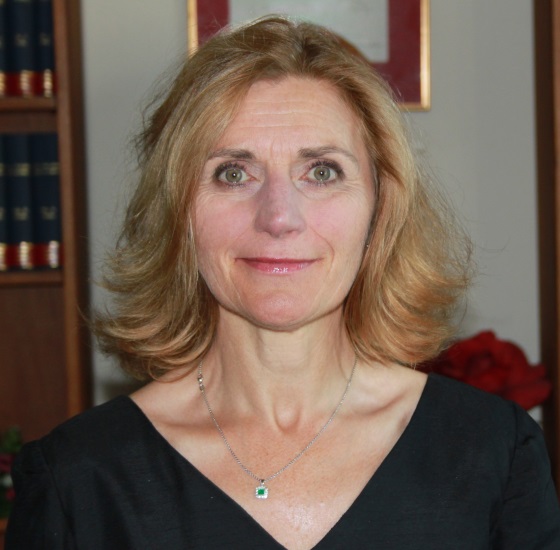
Dame Anne Rafferty

Dame Anne Rafferty
Dame Anne Rafferty read Law at Sheffield which in 2005 awarded her an Ll.D, was called by Gray’s Inn and began pupillage in 1974. She became a QC in 1990 and a Recorder in 1991. She is married to His Honour Brian John Barker CBE QC, the former Recorder of London, and has three daughters.
She was Head of Chambers at 4, Brick Court, (now 9, Bedford Row) 1994-2000. At the Criminal Bar Association she sat on the Committee 1986-91, was Secretary 1989-91, *Vice-Chairman 1993-95, and *Chairman 1995-97. She was *Chairman of the Bar Conference 1992. She was the only barrister on the Royal Commission on Criminal Justice 1991-93. On the Pigot Committee 1988-89 she wrote the recommendation now reflected in video-recorded interviews and subsequently of the evidence (in advance of trial) of vulnerable witnesses.
She was *Presiding Judge of the South Eastern Circuit 2003 – 2006.
She was a member of the Sentencing Council 2009-2012.
She was made a High Court Judge in 2000 and a Lord Justice of Appeal in 2011.
She was de facto *Chairman of the Criminal Procedure Rule Committee from 2012-17.
She became Chairman of the Judicial College in August 2014.
In November 2015 she was installed as *Chancellor of the University of Sheffield.
In 2017 she was appointed Vice Chairman of the Judicial Appointments Commission.
* = first woman
| 16:15-17:30 |
Panel discussion

Professor Thomas D AlbrightVision Center Laboratory, Salk Institute for Biological Studies, CA, US 
Professor Thomas D AlbrightVision Center Laboratory, Salk Institute for Biological Studies, CA, US Thomas D Albright is Professor and Conrad T Prebys Chair at the Salk Institute for Biological Studies. He is an authority on the neural basis of visual perception, memory and visually guided behaviour. An important goal of Professor Albright's work is the development of therapies for perceptual impairments resulting from disease, trauma, or developmental disorders of the brain. A second aim of his work is to use growing knowledge of brain, perception, and memory to inform societal decisions. Professor Albright received a PhD in psychology and neuroscience from Princeton University. He is a member of the US National Academy of Sciences (NAS), a fellow of the American Academy of Arts and Sciences, and a fellow of the American Association for the Advancement of Science. Professor Albright served on the NAS Committee on Science, Technology, and Law, on the National Commission on Forensic Science (an advisory body to the US Department of Justice), and on the human factors committee of the Organization of Scientific Area Committees for Forensic Science. He has also served as co-chair of the NAS Committee on Scientific Approaches to Eyewitness Identification, which produced the 2014 report Identifying the Culprit: Assessing Eyewitness Identification. 
Professor Gill Tully CBEKing's College London, UK 
Professor Gill Tully CBEKing's College London, UK Gill Tully has over 30 years' experience spanning research, casework and regulation in forensic science. She is Professor of Practice for Forensic Science Policy and Regulation at King's College London, in addition to providing training and consultancy services. From November 2014 to February 2021, she was the Forensic Science Regulator for England and Wales, responsible for setting quality standards for forensic science in the Criminal Justice System and for advising and challenging Government. Gill has given evidence to multiple Parliamentary Committees as well as providing expert evidence in courts in England and Wales and overseas. With several granted patents, numerous peer reviewed publications and experience of taking research ideas from inception to court, Gill has a record of effective innovation. She has advised the Government and companies on bringing research to market and has actively collaborated internationally. Her research interests include improving the quality and effectiveness of forensic science and improving the interface between science and the law. In her training and consultancy role, Gill works with forensic science leaders and practitioners to assist with improving the quality, reliability and effective application of forensic science, from crime scene to court. In 2020, Gill was awarded a CBE for services to forensic science. She is an Honorary Fellow of the Chartered Society of Forensic Sciences, an Honorary Fellow of the Faculty of Forensic and Legal Medicine, an Honorary Member of the Society of Legal Scholars and a member of the International Society of Forensic Genetics. 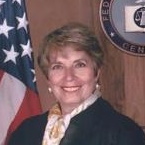
Hon Barbara J RothsteinUnited States District Court, Western District of Washington, US 
Hon Barbara J RothsteinUnited States District Court, Western District of Washington, US Judge Barbara Jacobs Rothstein was appointed to the federal bench in 1980. She was chief judge of the Western District of Washington from 1987-1994. She served as a King County Superior Court judge and was appointed Director of the Federal Judicial Center in Washington, DC in 2003. Prior to that, she practised law with a private firm in Boston, Massachusetts, and with the Consumer Protection and Antitrust Division of the State of Washington’s Attorney General’s office. Judge Rothstein graduated from Cornell University and attended Harvard Law School. She has taught trial practice at the University of Washington Law School. She is currently on the Board of the Institute of Judicial Administration at New York University Law School and has worked extensively with judges in Judicial Training Institutes around the world, particularly in Africa and Asia where she has lectured frequently on many subjects. 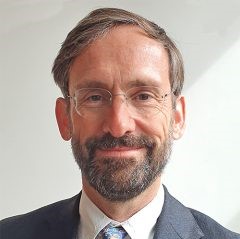
Mr Justice Richard MeadeHigh Court Judge of England and Wales, in charge of intellectual property 
Mr Justice Richard MeadeHigh Court Judge of England and Wales, in charge of intellectual property After working in computing for two years, he was called to the bar at Lincoln's Inn in 1991 and practised intellectual property law, mainly patents, from 8 New Square. He also appeared before the European Court of Justice and European Patent Office. He took silk in 2008, and was appointed deputy High Court judge in 2011. In September 2020, he was appointed a full time judge of the High Court, assigned to the Chancery Division. He is the Judge in Charge of the Patents Court and Intellectual Property. His work, at the Bar and since becoming a Judge, has nearly always concerned technology, including chemistry, molecular biology, pharmaceuticals (small molecules and biological molecules, especially antibody drugs), computer programs and algorithms, and mobile phones. He has worked with or against, or heard evidence from, hundreds of scientists, up to and including Nobel prize winners such as Aaron Klug, Harold Varmus, Sydney Brenner, George Smith, Greg Winter, Michael Houghton, John Walker. 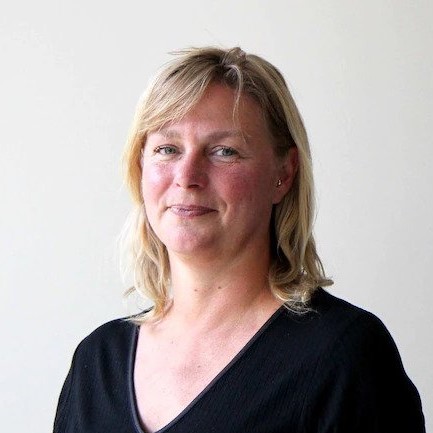
Professor Lucina HackmanUniversity of Dundee, UK 
Professor Lucina HackmanUniversity of Dundee, UK Lucina Hackman is a Professor of Forensic Anthropology based in the Centre for Anatomy and Human Identification at the University of Dundee. Professor Hackman is a practising, Chartered forensic anthropologist and has undertaken a wide range of casework in this capacity. One of her areas of specialty is in the identification of age in the living for the purposes of assisting investigations in asylum seekers and refugees. She has authored a chapter in a recent text on this subject, is co-editor on two texts on human identification, has numerous peer reviewed publications and has authored a large number of book chapters. She was lead author on both the UK Code of Practice for Forensic Anthropology as well as for the judicial primer on Forensic Anthropology. Professor Hackman has given expert evidence in both Scottish and English courts on a number of occasions in relation to both trauma analysis, identification and age estimation. She has been recognised as a member of the Home Office, UK Disaster Victim Identification response capability. 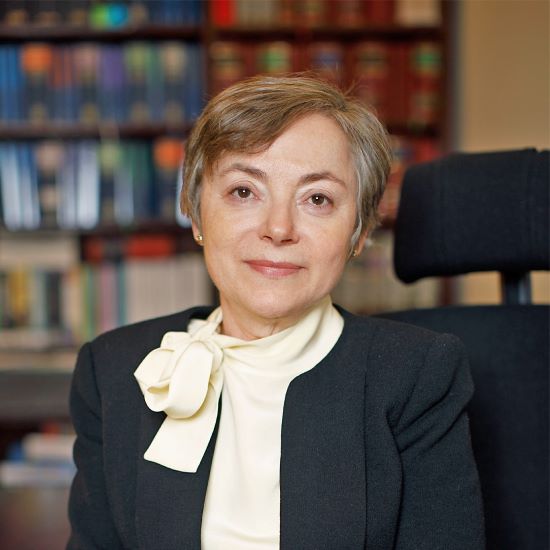
Dame Victoria Sharp DBEPresident of the King's Bench Division 
Dame Victoria Sharp DBEPresident of the King's Bench Division Dame Victoria Sharp read law at Bristol University, was called to the Bar (Inner Temple) in 1979 and took silk in 2001. She became a Recorder in 1998-2008. She was appointed as a Deputy High Court Judge in 2008, and a High Court Judge of the Queen's Bench Division (now King's Bench Division) in 2009. She was a Presiding Judge on the Western Circuit from 2012 to 2013. She was appointed as a Lady Justice of Appeal in 2013. She was appointed as the Vice-President of the Queen's Bench Division (now King's Bench Division) in January 2016, and President of the Queen's Bench Division in June 2019. In February 2020, she was appointed as Deputy Head of Criminal Justice. Dame Victoria succeeded Sir Brian Leveson and is the first woman to hold the position of President of the Queen's Bench Division and subsequently is the first woman to hold the position of President of the King's Bench Division. |
|---|
| 09:25-09:35 |
Introduction to the session
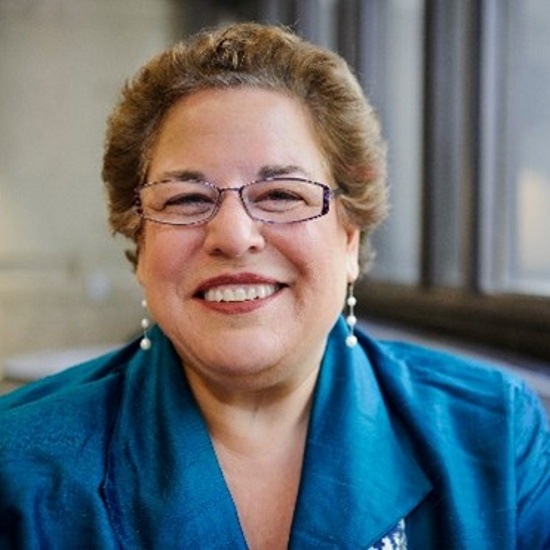
Professor Alta CharoUniversity of Wisconsin–Madison, US 
Professor Alta CharoUniversity of Wisconsin–Madison, US R Alta Charo, JD, is the Warren P Knowles professor emerita of law and bioethics at the University of Wisconsin–Madison (UW) and since 2020 works as an independent consultant to industry and government on biotechnology ethics, regulation and policy. She also serves as co-chair of the safety, security, sustainability and social responsibility unit of BioMADE, a US-based consortium of biotechnology companies and academic centers. Prior to her arrival at UW in 1989, Ms Charo served as associate director of the Legislative Drafting Research Fund of Columbia University, Fulbright lecturer in American law at the Sorbonne in Paris, legal analyst at the congressional Office of Technology Assessment, and American Association for the Advancement of Science (AAAS) diplomacy fellow at the US Agency for International Development. Also, in government, she was a member of President Clinton’s National Bioethics Advisory Commission and a senior policy advisor in the FDA’s Office of the Commissioner under the Obama administration. At the US National Academies of Sciences, Engineering, and Medicine, Ms Charo has served on numerous committees, the committee that issued the 2004 report ‘Biotechnology Research in the Age of Terrorism’; the committee on emerging science, technology and innovation; and the committees on emerging infectious diseases and COVID-19 vaccine and monoclonal antibody allocation frameworks. She co-chaired the National Academies committee that wrote guidelines for embryonic stem cell research and the committee that developed recommendations for US policy and global principles for human genome editing research and clinical trials. Ms Charo recently completed service on the World Health Organization’s committee on global governance of genome editing. She is an elected member of the US National Academy of Medicine and an elected Fellow of the AAAS and of the American Academy of Arts and Sciences. 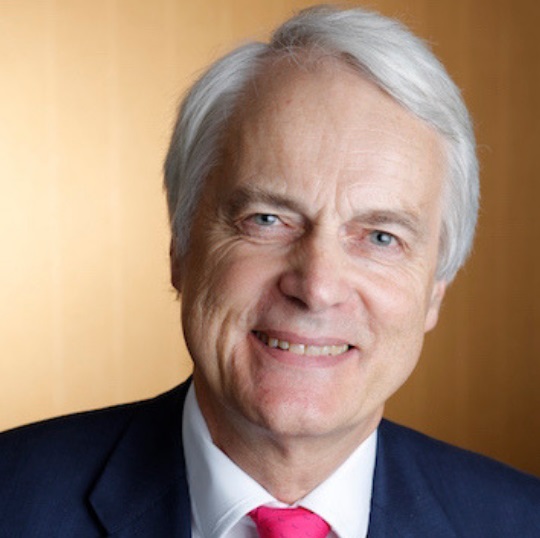
Sir Robert Francis KCHonourable Society of the Inner Temple 
Sir Robert Francis KCHonourable Society of the Inner Temple Sir Robert Francis KC is Treasurer of the Honourable Society of the Inner Temple, honorary President of the Patients Association, and Patron of the Florence Nightingale Foundation. He practised as a barrister until his retirement from full-time practice in 2020, specialising in medical law, including clinical negligence, medical and patient decision-making and professional discipline and regulation. Sir Robert chaired the Mid-Staffordshire NHS Foundation Trust inquiries (2010, 2013) recommending reforms including a duty of candour. He conducted the Freedom to Speak Up Review into the treatment of NHS whistleblowers (2015). In 2022, he recommended a framework for compensating the victims of infected blood. He was Chair of Healthwatch England and non-executive director of the Care Quality Commission until 2022. He co-authored Medical Treatment: Decisions and the Law (2009), and has been chair of the Professional Negligence Bar Association, a Recorder and a deputy High Court Judge. Sir Robert was knighted in 2014, and has received honorary fellowships from the Royal College of Anaesthetists, the Royal College of Surgeons (England), the Royal College of Pathologists and the Faculty of Forensic Medicine of the Royal College of Physicians. |
|---|---|
| 09:35-09:55 |
Human genome editing and enhancement
There has been rapid progress over the last few years in developing genome editing techniques to treat patients with genetic disorders, with many clinical trials now in progress. The US Food and Drug Administration (FDA) has licenced the first genome editing treatment that has been deemed both safe and effective: a treatment for sickle cell disease and beta-thalassaemia. However, these genome editing techniques could also be used for 'enhancement' a concern voiced by many. Fears range from applications that might increase social inequity to the creation of armies of super-soldiers. What might be possible, how and to whom the methods might be applied, and the nature of any likely consequences are all complex topics that require proper thought and not simple, scary headlines. In this talk, Professor Lovell-Badge will discuss somatic, epigenetic, and heritable changes that could be made by genome editing, and how these could involve anything from conferring an advantage - for example, changing a common allele into an outlier allele - to conferring novel traits - for example, introducing 'designer' genes or those from other species. He will also mention uses for this editing technology that might give unfair advantages in sport, be considered protective (whether for disease resistance, in exploration, or for the military) or - to be very speculative - enhance human evolution. 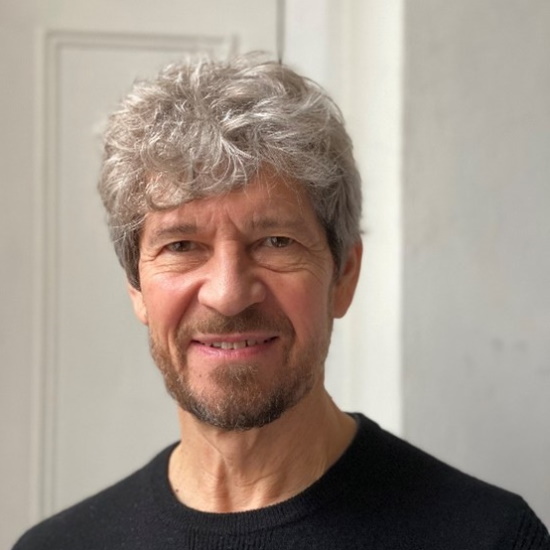
Professor Robin Lovell-Badge FRSThe Francis Crick Institute 
Professor Robin Lovell-Badge FRSThe Francis Crick Institute Robin Lovell-Badge obtained his PhD at University College London in 1978 and was a postdoc in Cambridge, both with Martin Evans. After an EMBO fellowship in Paris he established his independent laboratory in 1982 at the MRC Mammalian Development Unit, UCL, directed by Anne McLaren. In 1988 he moved to the MRC National Institute for Medical Research, which was incorporated into the Francis Crick Institute in 2015. In 1990, his lab discovered Sry, the Y-linked sex determining gene and the Sox gene family. Major themes of his past and current work include sex determination, development of the gonads, nervous system and pituitary, and the biology of stem cells within these systems. He is also very active in both public engagement and policy work. He has a strong interest in the prospects for applications of human genome editing and was on the organising committee for the three international Summits held on this, including as chair for the 2023 meeting. |
| 09:55-10:15 |
Cognitive enhancement: Do drugs work, why are people using them and what are the ethical and societal implications?
There is an increasing use by healthy people of cognitive enhancing drugs or 'smart drugs', including amphetamine salts (Adderall), methylphenidate (Ritalin) and modafinil (Provigil). These are frequently used to increase performance in university exams or at work or even to complete work successfully, particularly if the job involves high risk impacts and also to counteract the effects of jetlag or sleep deprivation leading to fatigue. Published studies from Professor Sahakian's laboratory and articles published by others have shown that these drugs do improve cognitive performance on some objective tests in healthy people. While many think that it is easy to distinguish between the use of drugs to treat a diagnosed illness and the use of drugs for enhancement purposes, this may not be so clear. For example, if you are an older person still working and you are competing with people in their 20s (at the optimal level of cognitive performance), is using a drug to restore your cognition back to your younger self restoration or enhancement? Also, while one medical practitioner may decide that the symptoms of poor attention and hyperactivity are sufficiently severe for a diagnosis and pharmacological treatment of attention deficit hyperactivity disorder (ADHD), another clinician may not. When as a society would we want healthy people to use these drugs? Would we want to use wake promoting drugs, such as modafinil, to keep the military personnel alert during conflict situations or to keep surgeons functioning at their optimal level of performance during late night emergency operations? Healthy people are also microdosing with lysergic acid diethylamide (LSD) and psilocybin apparently to improve creativity and productivity and to improve mood, although the objective evidence for these beneficial effects is lacking. We also need to consider from a neuroethical perspective, which forms of cognitive enhancement are acceptable, for whom and when, and what methods we should use to improve our cognition and wellbeing as individuals and to flourish as a society. Professor Barbara Sahakian FMedSci, Professor of Clinical Neuropsychology, University of Cambridge
Professor Barbara Sahakian FMedSci, Professor of Clinical Neuropsychology, University of CambridgeProfessor Barbara J Sahakian is based at the University of Cambridge Department of Psychiatry and Behavioural and Clinical Neuroscience Institute. She is a Fellow of the British Academy and the Academy of Medical Sciences. Sahakian has an international reputation in the fields of psychopharmacology, neuropsychology, neuropsychiatry, neuroimaging and neuroethics. She has over 450 publications in scientific journals and a Hirsch (h) index of 112. Sahakian co-invented the neuropsychological CANTAB and EMOTICOM computerised tests (www.cambridgecognition.com), the University of Cambridge/PEAK Advanced Training Programme and the Wizard Apprentice Memory Game (www.peak.net) . She is a member of the WEF on the Future of Neurotechnologies and Brain Science and is on the Clinical Advisory Board of the Human Brain Project. Her policy work includes the UK Government Foresight Project on Mental Capital and Wellbeing, the UK Government Scoping the Future of Neuroscience over the next 10 Years and Grand Challenges in Global Mental Health. |
| 10:15-10:35 |
Coma, vegetative state and brain death: the contribution of functional neuroimaging
Disorders of consciousness, including coma, the vegetative state, and the minimally conscious state, are some of the least understood and most ethically troublesome conditions in modern medicine. Decisions to withdraw care focus typically on clinical indicators predicting a poor neurological outcome. No currently accepted clinical measures can determine the likelihood of good functional recovery (allowing sufficient function for independent activities of daily life). In recent years, rapid technological developments in neuroimaging have provided several new methods for revealing thoughts, actions and intentions based solely on the pattern of activity in the brain. These methods are now employed in many research centres to assess residual brain function, detect consciousness and even to communicate with some clinically non-responsive patients who appear comatose, or in a vegetative, or minimally conscious state. These emerging technologies have profound implications for clinical care, diagnosis, prognosis, ethics, and medical-legal decision-making after severe brain injury. In this talk, Professor Owen will review some of the latest developments in this field, focussing on how and when these the new tools might be integrated into decisions about withdrawal of care. 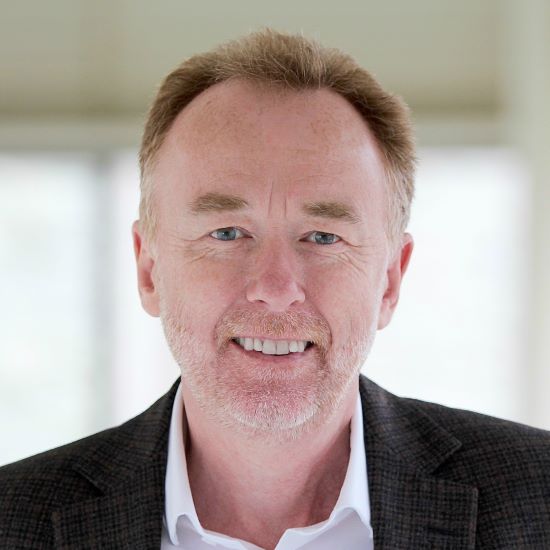
Professor Adrian Owen OBE FRSCBrain and Mind Institute, University of Western Ontario, Canada 
Professor Adrian Owen OBE FRSCBrain and Mind Institute, University of Western Ontario, Canada Adrian M Owen is Professor of Cognitive Neuroscience and Imaging at the University of Western Ontario, Canada and co-directs the Canadian Institute for Advanced Research (CIFAR) Brain, Mind, and Consciousness programme. His research combines structural and functional neuroimaging with neuropsychological studies of brain-injured patients. Owen has published over 400 scientific articles and chapters as well as a best-selling popular science book Into the Grey Zone: A Neuroscientist Explores the Border between Life and Death. He was awarded an OBE in 2019 for services to scientific research. |
| 10:35-10:55 |
The future of brain interfacing
The era of brain interfaces is approaching. Simple brain interface devices have been used in the clinic for about twenty years, though only in limited contexts. Recent advances have shown that the clinical potential of brain interfacing is immense, including the restoration of lost sensory and motor function and the treatment of a wide range of neurological and neuropsychiatric disorders. We are also seeing a steep rise in interest from academia, industry, investors, and the public. This interest is further accelerating progress, but also has the potential to create unrealistic expectations for the field. This talk will present a brief view of the present state of brain interfacing and some thoughts on future developments and limitations. 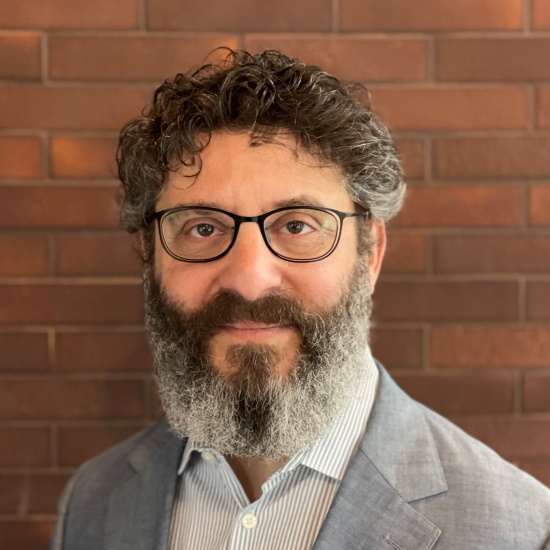
Professor Philip SabesUniversity of California, San Francisco, US 
Professor Philip SabesUniversity of California, San Francisco, US Philip Sabes is a neuroscientist, neural engineer and a Professor Emeritus at the University of California, San Francisco (UCSF). Philip received his PhD from MIT, focusing on machine learning and models of human motor control, and trained as a neurophysiologist during a postdoc with Richard Andersen at Caltech. At UCSF, the Sabes Lab combined neurophysiology, computation and behaviour to discover how sensory feedback drives movement control. The lab also developed technologies for Brain Machine Interfacing (BMI), including the first demonstration of real-time artificial sensory feedback delivered via multi-electrode microsimulation and a novel sewing-machine approach to neural interfacing that allows micron-scale, thin-film devices to be individually implanted in the brain. In 2017, Philip retired from UCSF to help launch Neuralink. While there, the company further developed the sewing machine approach, demonstrating a fully-implanted, 1,000 channel device. After leaving Neuralink, Philip co-founded Starfish Neuroscience, a startup focused on Neuromodulation. He currently resides in the Seattle Area. |
| 10:55-11:15 |
Panel discussion
Professor Barbara Sahakian FMedSci, Professor of Clinical Neuropsychology, University of Cambridge
Professor Barbara Sahakian FMedSci, Professor of Clinical Neuropsychology, University of CambridgeProfessor Barbara J Sahakian is based at the University of Cambridge Department of Psychiatry and Behavioural and Clinical Neuroscience Institute. She is a Fellow of the British Academy and the Academy of Medical Sciences. Sahakian has an international reputation in the fields of psychopharmacology, neuropsychology, neuropsychiatry, neuroimaging and neuroethics. She has over 450 publications in scientific journals and a Hirsch (h) index of 112. Sahakian co-invented the neuropsychological CANTAB and EMOTICOM computerised tests (www.cambridgecognition.com), the University of Cambridge/PEAK Advanced Training Programme and the Wizard Apprentice Memory Game (www.peak.net) . She is a member of the WEF on the Future of Neurotechnologies and Brain Science and is on the Clinical Advisory Board of the Human Brain Project. Her policy work includes the UK Government Foresight Project on Mental Capital and Wellbeing, the UK Government Scoping the Future of Neuroscience over the next 10 Years and Grand Challenges in Global Mental Health. 
Professor Philip SabesUniversity of California, San Francisco, US 
Professor Philip SabesUniversity of California, San Francisco, US Philip Sabes is a neuroscientist, neural engineer and a Professor Emeritus at the University of California, San Francisco (UCSF). Philip received his PhD from MIT, focusing on machine learning and models of human motor control, and trained as a neurophysiologist during a postdoc with Richard Andersen at Caltech. At UCSF, the Sabes Lab combined neurophysiology, computation and behaviour to discover how sensory feedback drives movement control. The lab also developed technologies for Brain Machine Interfacing (BMI), including the first demonstration of real-time artificial sensory feedback delivered via multi-electrode microsimulation and a novel sewing-machine approach to neural interfacing that allows micron-scale, thin-film devices to be individually implanted in the brain. In 2017, Philip retired from UCSF to help launch Neuralink. While there, the company further developed the sewing machine approach, demonstrating a fully-implanted, 1,000 channel device. After leaving Neuralink, Philip co-founded Starfish Neuroscience, a startup focused on Neuromodulation. He currently resides in the Seattle Area. 
Professor Adrian Owen OBE FRSCBrain and Mind Institute, University of Western Ontario, Canada 
Professor Adrian Owen OBE FRSCBrain and Mind Institute, University of Western Ontario, Canada Adrian M Owen is Professor of Cognitive Neuroscience and Imaging at the University of Western Ontario, Canada and co-directs the Canadian Institute for Advanced Research (CIFAR) Brain, Mind, and Consciousness programme. His research combines structural and functional neuroimaging with neuropsychological studies of brain-injured patients. Owen has published over 400 scientific articles and chapters as well as a best-selling popular science book Into the Grey Zone: A Neuroscientist Explores the Border between Life and Death. He was awarded an OBE in 2019 for services to scientific research. 
Professor Robin Lovell-Badge FRSThe Francis Crick Institute 
Professor Robin Lovell-Badge FRSThe Francis Crick Institute Robin Lovell-Badge obtained his PhD at University College London in 1978 and was a postdoc in Cambridge, both with Martin Evans. After an EMBO fellowship in Paris he established his independent laboratory in 1982 at the MRC Mammalian Development Unit, UCL, directed by Anne McLaren. In 1988 he moved to the MRC National Institute for Medical Research, which was incorporated into the Francis Crick Institute in 2015. In 1990, his lab discovered Sry, the Y-linked sex determining gene and the Sox gene family. Major themes of his past and current work include sex determination, development of the gonads, nervous system and pituitary, and the biology of stem cells within these systems. He is also very active in both public engagement and policy work. He has a strong interest in the prospects for applications of human genome editing and was on the organising committee for the three international Summits held on this, including as chair for the 2023 meeting. |
Chair
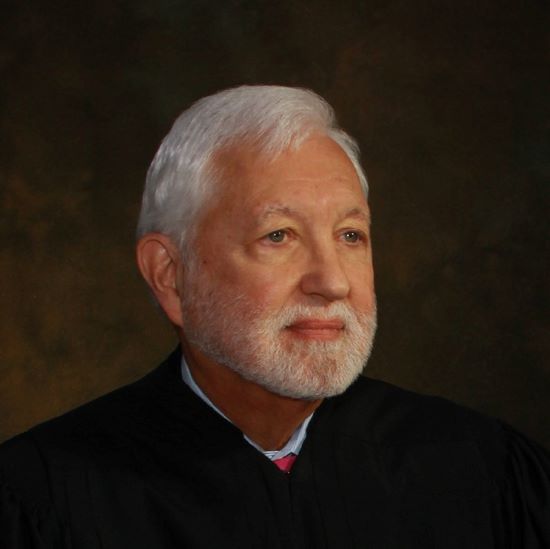
Judge Jed S Rakoff
Senior District Judge for New York Southern District, US

Judge Jed S Rakoff
Senior District Judge for New York Southern District, US
Jed S Rakoff has been a US federal judge based in Manhattan since 1996. He is also an adjunct professor of law at both Columbia University (since 1988) and New York University (since 2012). Judge Rakoff was educated at Swarthmore College (BA 1964), Oxford University (MPhil 1966) and Harvard Law School (JD 1969).
Before going on the bench, he was first a federal prosecutor (1972-1980) and then a partner and criminal defence lawyer at two large US law firms (1980-1996). As a judge, he is especially known for his decisions in business law and criminal law. He has also written extensively on science and the law.
| 11:55-12:15 |
Memory in the dock
Memory retains a privileged role in the courtroom, and it is difficult to envisage witness evidence that does not, to a greater or lesser degree, rely on the exercise of this faculty. Nevertheless, its privileged status is under challenge, primarily based upon findings from cognitive science. This talk will provide a brief introduction to the complex structure of human memory and then address a number of key areas where its reliability has come under increasing scrutiny. This will include consideration of potential contamination via post-event misinformation, the relationship between confidence and accuracy, how memory is impacted by time and the potential contribution of witness variables. Professor Dolan will conclude by considering the implications of these findings and how they might impact the weighting attached to memory-based evidence. Professor Raymond Dolan FMedSci FRS, UCL, UK
Professor Raymond Dolan FMedSci FRS, UCL, UKRay Dolan is a Mary Kinross Assessor of Neuropsychiatry at UCL. He is currently Director of the Max Planck Centre for Computational Psychiatry and Ageing at UCL. His research is concerned with the neurobiology of emotion and decision making, as well aits aberrant expression in the context of psychopathology. He is a Fellow of the Academy of Medical Sciences (2000), Fellow of the Royal Society (2010) and an external member of the Max Planck Society (2012). |
|---|---|
| 12:15-12:35 |
A human information processing approach to forensics
The value of eyewitness reports for criminal investigation and prosecution is fundamentally tied to accuracy. Recognising that accuracy is rarely patent, can be corrupted by use of suggestive procedures, and that such testimony may have no physical corroboration, the US Supreme Court established in Manson v. Braithwaite (1977) a 'reliability test'. This test reflects simple intuitions about human information processing that are to be weighed by the courts to assess accuracy - hence admissibility - of eyewitness evidence. Since this influential ruling, two important things have happened: (1) new procedures for DNA-based identification have confirmed high rates of wrongful conviction resulting from eyewitness misidentification and (2) science has significantly advanced understanding of the contributions and limitations of sensation and memory in human decisions. In light of this modern science-based understanding, it is clear that the Manson test is insufficient to yield what was intended: a useful estimate of eyewitness accuracy. This presentation will outline the difficulties of inferring the accuracy of candid human testimony, which is impacted by three factors: uncertainty, bias, and overconfidence. Uncertainty results from manifold sources of noise that plague biological systems for sensation and memory. Biases are born from prior experiences and expectations and called into service to fill informational gaps. The ease of this unwitting perceptual/cognitive completion, in turn, yields exaggerated confidence. This framework highlights alternative approaches to accuracy rooted in the modern sciences of human information processing. 
Professor Thomas D AlbrightVision Center Laboratory, Salk Institute for Biological Studies, CA, US 
Professor Thomas D AlbrightVision Center Laboratory, Salk Institute for Biological Studies, CA, US Thomas D Albright is Professor and Conrad T Prebys Chair at the Salk Institute for Biological Studies. He is an authority on the neural basis of visual perception, memory and visually guided behaviour. An important goal of Professor Albright's work is the development of therapies for perceptual impairments resulting from disease, trauma, or developmental disorders of the brain. A second aim of his work is to use growing knowledge of brain, perception, and memory to inform societal decisions. Professor Albright received a PhD in psychology and neuroscience from Princeton University. He is a member of the US National Academy of Sciences (NAS), a fellow of the American Academy of Arts and Sciences, and a fellow of the American Association for the Advancement of Science. Professor Albright served on the NAS Committee on Science, Technology, and Law, on the National Commission on Forensic Science (an advisory body to the US Department of Justice), and on the human factors committee of the Organization of Scientific Area Committees for Forensic Science. He has also served as co-chair of the NAS Committee on Scientific Approaches to Eyewitness Identification, which produced the 2014 report Identifying the Culprit: Assessing Eyewitness Identification. |
| 12:35-13:00 |
Panel discussion
Professor Raymond Dolan FMedSci FRS, UCL, UK
Professor Raymond Dolan FMedSci FRS, UCL, UKRay Dolan is a Mary Kinross Assessor of Neuropsychiatry at UCL. He is currently Director of the Max Planck Centre for Computational Psychiatry and Ageing at UCL. His research is concerned with the neurobiology of emotion and decision making, as well aits aberrant expression in the context of psychopathology. He is a Fellow of the Academy of Medical Sciences (2000), Fellow of the Royal Society (2010) and an external member of the Max Planck Society (2012). 
Professor Thomas D AlbrightVision Center Laboratory, Salk Institute for Biological Studies, CA, US 
Professor Thomas D AlbrightVision Center Laboratory, Salk Institute for Biological Studies, CA, US Thomas D Albright is Professor and Conrad T Prebys Chair at the Salk Institute for Biological Studies. He is an authority on the neural basis of visual perception, memory and visually guided behaviour. An important goal of Professor Albright's work is the development of therapies for perceptual impairments resulting from disease, trauma, or developmental disorders of the brain. A second aim of his work is to use growing knowledge of brain, perception, and memory to inform societal decisions. Professor Albright received a PhD in psychology and neuroscience from Princeton University. He is a member of the US National Academy of Sciences (NAS), a fellow of the American Academy of Arts and Sciences, and a fellow of the American Association for the Advancement of Science. Professor Albright served on the NAS Committee on Science, Technology, and Law, on the National Commission on Forensic Science (an advisory body to the US Department of Justice), and on the human factors committee of the Organization of Scientific Area Committees for Forensic Science. He has also served as co-chair of the NAS Committee on Scientific Approaches to Eyewitness Identification, which produced the 2014 report Identifying the Culprit: Assessing Eyewitness Identification. 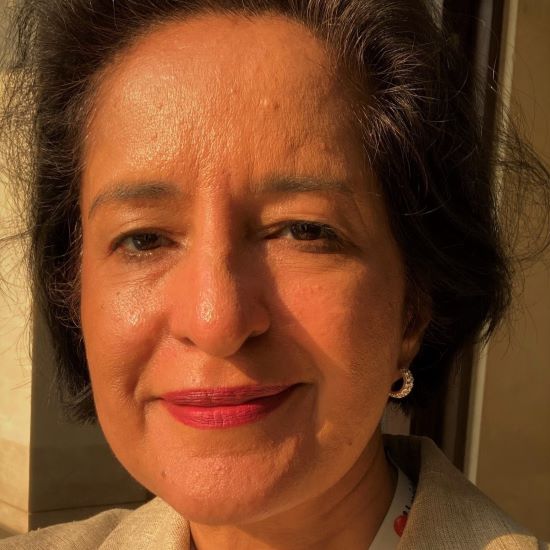
Mrs Justice (Bobbie) Cheema-GrubbKing's Bench Division, High Court of England and Wales 
Mrs Justice (Bobbie) Cheema-GrubbKing's Bench Division, High Court of England and Wales Dame Bobbie Cheema-Grubb was called to the bar in 1989 by Gray's Inn. She was appointed a Queen's Counsel (now King's Counsel) in 2013. She was in private practice in crime and public law until her appointment to the High Court in 2015. She was senior Treasury Counsel at the Old Bailey with a reputation for exacting preparation and relishing the most intricate cases. She prosecuted the first man charged with directing Al Qaeda in the UK and led the Crown's team in the Hemingway intellectual property fraud trial. Her extra-curricular activities included chairing the Advocacy Training Council working group that produced the report Raising the Bar: The Handling of Vulnerable Witnesses, Victims and Defendants in Court which led to the introduction of ground rules hearings and issued the first tool-kits for complex witness handling. On the bench her cases have included that of David Fuller, the double murderer who offended against corpses in two hospital mortuaries and David Carrick, a former Metropolitan Police officer jailed in February 2023 for at least 30 years after pleading guilty to multiple counts of rape and sexual offences. She leads for the England and Wales judiciary on international judicial training and this year she facilitated training Ukrainian judges in Poland on the trial of war crimes to international standards. |
| 14:00-14:10 |
Introduction from the Chair
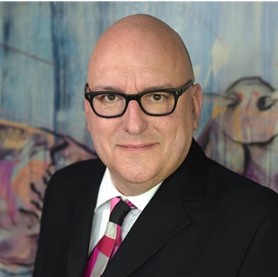
Mr Justice Ian DoveJudge of the High Court of England and Wales 
Mr Justice Ian DoveJudge of the High Court of England and Wales Ian Dove was called to the Bar at Inner Temple in 1986 and was a member of the Planning and Environment Bar association, the Administrative Bar Association and the Compulsory Purchase association. Prior to taking silk, he served on the Panel of Junior Counsel to the Crown (Treasury Council) in the Provinces. He sat as an Immigration Judge, Recorder in the Crown and County Courts, Deputy High Court Judge and occasional inspector for Town and Village Green inquiries until he was appointed as a High Court Judge of the Queen's Bench Division (now the King's Bench Division) on 1 October 2014. Mr Justice Dove is a Bencher at the Inner Temple and from 2013-2014 was an Honorary Professor of Law at Birmingham University. In September 2016 he was made an Honorary Fellow of St Catherine's College, Oxford.< |
|---|---|
| 14:10-14:30 |
The science behind climate change and its mitigation
The concentrations of carbon dioxide and other greenhouse gases are increasing due to anthropogenic emissions, resulting in a range of climate impacts. These impacts are proportional to cumulative emissions, with implications for apportioning responsibility. Preventing 'dangerous interference with the climate system' requires concentrations to be stabilised, leading to the concept of net-zero, which is enshrined in UK law through the Climate Change Act. This talk will discuss the evidence that this causes global warming, what is needed to achieve net zero and the nature of the evidence that might be used in legal cases. Professor Eric Wolff FRSUniversity of Cambridge Professor Eric Wolff FRSUniversity of Cambridge Professor Eric Wolff FRS is a Royal Society Research Professor in the Department of Earth Sciences at Cambridge University. After graduating as a chemist, he has studied ice cores from the Antarctic and Greenland for the past 40 years, using them to understand changing climate, as well as changing levels of pollution in remote areas. Professor Wolff is also an Honorary Fellow at the British Antarctic Survey where he worked for many years. He chaired the science committee of the European Project for Ice Coring in Antarctica (EPICA), which produced 800,000 year records of climate from the Dome C (Antarctica) ice core. He recently held an ERC Advanced Grant that studies the past stability of the West Antarctic Ice Sheet. He chairs the Royal Society's working party on climate change, helping to produce a number of public and policy-facing reports. |
| 14:30-14:50 |
Attribution: from global climate change to individual damaging events
Changes in global temperature can be attributed to specific causes, and this attribution has demonstrated that greenhouse warming has indeed influenced the climate and has revealed by how much. This talk will explain the key concepts behind attribution, including what is known about human-caused changes in rainfall, drought, and extreme events, and the linked impacts such as vegetation dieback, fire and human-caused climate change. We can now also understand and attribute the causes of individual extreme events - this helps identify whether climate change has changed the likelihood of events occurring and how the impacts of climate change compare to other factors such as human land or water use change. This talk will give examples ranging from scenarios where little or unreliable climate change influence was found, to those showing a substantially increased probability of events, and even to those where an event would have been impossible without human influence. It will also briefly describe the process of Assessments of Climate Change by the Intergovernmental Panel on Climate Change (IPCC). 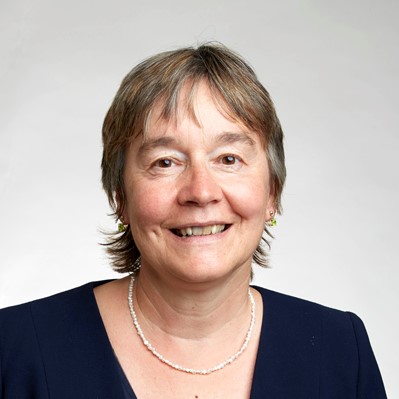
Professor Gabi Hegerl FRSUniversity of Edinburgh, UK 
Professor Gabi Hegerl FRSUniversity of Edinburgh, UK Gabi Hegerl is a climate scientist who focuses on identifying the drivers and mechanisms of observed climate change. This work provides a critical underpinning to predictions of future changes. Gabi published some of the first studies determining that recent warming is statistically different from climate variability, and pioneered a method that distinguishes between possible causes for climate change, such as greenhouse gas increases or changes in the sun. She has also made important contributions to estimating climate sensitivity, and to determining the causes of changing characteristics of extreme weather events. Gabi's recent work has shown that human influences have changed global precipitation patterns, sharpening the contrast between wet and dry regions, while volcanic eruptions show an opposite effect. Gabi has had key roles in scientific assessments of climate change (IPCC), and is a fellow of the American Geophysical Union and of the Royal Society of Edinburgh. She received a Royal Society Wolfson Merit award, the Hans Sigrist Prize awarded by Bern University (2016) and the Achievement Award of the International Meeting on Statistical Climatology. |
| 14:50-15:10 |
Interactions between climate change and air quality in policy and science
Many air pollutants that are subject to international regulations (such as SO2, NO2, NH3, VOC) also influence climate, often through the products of chemical processing in the atmosphere. Probability and associated statistical tests offer ways of quantitatively linking environmental damage, including air pollution, to specific sources, provided that the necessary data can be obtained. This can be extremely useful in civil law cases. In addition, the design and implementation of net zero policies offers an opportunity to enhance air quality, delivering substantial reductions in air pollutant concentrations and their effects on the environment and human health as a co-benefit. This talk will describe air pollutants, their interactions with the climate, their effects on the environment. It will also present a range of policy options for improving air quality, touching on the approaches taken in different countries and their differing benefits. Professor David Fowler CBE FRS, Centre for Ecology and Hydrology (Edinburgh Research Station), UK
Professor David Fowler CBE FRS, Centre for Ecology and Hydrology (Edinburgh Research Station), UKDavid Fowler’s research interests are mainly in the biogeochemistry of nitrogen, sulphur and carbon and specifically on surface-atmosphere exchange processes. These interests include some of the major regional environmental issues including photochemical oxidants, eutrophication, acid deposition, emissions of greenhouse gases and atmospheric aerosols. His published work includes 210 refereed publications and a similar output of other papers, reports and books. He has an Honorary Professorship at the University of Nottingham, became a Fellow of the Royal Society of Edinburgh in 1999, a Fellow of the Royal Society of London in 2002, and in 2005 was awarded a CBE for services in Atmospheric Pollution research. |
| 15:10-15:30 |
'What did the law do in the climate crisis, Daddy?' - Market perspectives on climate change
Organisations are looking at how to score well in environmental, social and governance (ESG) rankings, but is ESG a driver for a proper anti-climate change market? Voluntary carbon offset markets dominate the conferences, but are any of them actually pukka and how puny are they? The UK crows about having the world's first 'legally binding' national commitment to cut greenhouse gas emissions, but do the markets care? In this talk, Professor Mainelli will assess progress and promise on climate change and the carbon markets. He asserts that green markets and green finance in greenhouse gas emissions aren't that special. Rather, traditional market measures are essential for reducing greenhouse gas emissions, including competition, open data, better regulation, and community standards markets. One current problem is that society does not talk openly about the real costs. While wider green issues of land misuse, pollution, or biodiversity may still require special approaches, the biggest investment risk - government policy change risk - is not being discussed loudly enough. Professor Mainelli concludes that properly costed carbon markets with financial cuffs on government policy (eg policy performance bonds, aka sovereign sustainability-linked bonds) could go a long way, and that the voluntary carbon offset markets can work if financial guarantees are added. 'Rule of law' has a huge role, as it does in all well-functioning markets, but special legal approaches are probably unnecessary against greenhouse gas emissions. 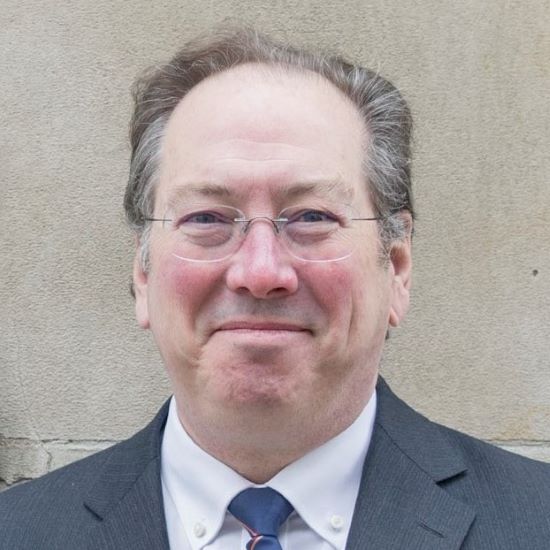
Professor Michael MainelliZ/Yen Group and City of London Corporation 
Professor Michael MainelliZ/Yen Group and City of London Corporation Michael is a scientist and economist trying to promote societal advance through better finance and technology. He founded Z/Yen, the City of London's leading think-tank and venture firm, in 1994. Z/Yen is renowned for its Global Financial, Green Finance, and Smart Centres indices, as well as notable 'firsts' in research. Educated at Harvard, Trinity College Dublin, and the London School of Economics, where he was also Visiting Professor in innovation and IT, he became a senior partner with BDO Binder Hamlyn, and Corporate Development Director for the Ministry of Defence's Defence Evaluation and Research Agency. Michael is a fellow of Kings College London, Goodenough College, and Gresham College, visiting professor at UCL's Bartlett School of Sustainable Construction, Honorary Bencher of Middle Temple, non-executive director of the United Kingdom Accreditation Service and a listed mining company. He is active in ten livery companies, past Master of the World Traders, an Alderman of the City of London, and late Sheriff of the City of London 2019-2021, with charity interests in the environment, education, and care. |
| 15:30-16:00 |
Panel discussion
Professor Eric Wolff FRSUniversity of Cambridge Professor Eric Wolff FRSUniversity of Cambridge Professor Eric Wolff FRS is a Royal Society Research Professor in the Department of Earth Sciences at Cambridge University. After graduating as a chemist, he has studied ice cores from the Antarctic and Greenland for the past 40 years, using them to understand changing climate, as well as changing levels of pollution in remote areas. Professor Wolff is also an Honorary Fellow at the British Antarctic Survey where he worked for many years. He chaired the science committee of the European Project for Ice Coring in Antarctica (EPICA), which produced 800,000 year records of climate from the Dome C (Antarctica) ice core. He recently held an ERC Advanced Grant that studies the past stability of the West Antarctic Ice Sheet. He chairs the Royal Society's working party on climate change, helping to produce a number of public and policy-facing reports. 
Professor Gabi Hegerl FRSUniversity of Edinburgh, UK 
Professor Gabi Hegerl FRSUniversity of Edinburgh, UK Gabi Hegerl is a climate scientist who focuses on identifying the drivers and mechanisms of observed climate change. This work provides a critical underpinning to predictions of future changes. Gabi published some of the first studies determining that recent warming is statistically different from climate variability, and pioneered a method that distinguishes between possible causes for climate change, such as greenhouse gas increases or changes in the sun. She has also made important contributions to estimating climate sensitivity, and to determining the causes of changing characteristics of extreme weather events. Gabi's recent work has shown that human influences have changed global precipitation patterns, sharpening the contrast between wet and dry regions, while volcanic eruptions show an opposite effect. Gabi has had key roles in scientific assessments of climate change (IPCC), and is a fellow of the American Geophysical Union and of the Royal Society of Edinburgh. She received a Royal Society Wolfson Merit award, the Hans Sigrist Prize awarded by Bern University (2016) and the Achievement Award of the International Meeting on Statistical Climatology. Professor David Fowler CBE FRS, Centre for Ecology and Hydrology (Edinburgh Research Station), UK
Professor David Fowler CBE FRS, Centre for Ecology and Hydrology (Edinburgh Research Station), UKDavid Fowler’s research interests are mainly in the biogeochemistry of nitrogen, sulphur and carbon and specifically on surface-atmosphere exchange processes. These interests include some of the major regional environmental issues including photochemical oxidants, eutrophication, acid deposition, emissions of greenhouse gases and atmospheric aerosols. His published work includes 210 refereed publications and a similar output of other papers, reports and books. He has an Honorary Professorship at the University of Nottingham, became a Fellow of the Royal Society of Edinburgh in 1999, a Fellow of the Royal Society of London in 2002, and in 2005 was awarded a CBE for services in Atmospheric Pollution research. 
Professor Michael MainelliZ/Yen Group and City of London Corporation 
Professor Michael MainelliZ/Yen Group and City of London Corporation Michael is a scientist and economist trying to promote societal advance through better finance and technology. He founded Z/Yen, the City of London's leading think-tank and venture firm, in 1994. Z/Yen is renowned for its Global Financial, Green Finance, and Smart Centres indices, as well as notable 'firsts' in research. Educated at Harvard, Trinity College Dublin, and the London School of Economics, where he was also Visiting Professor in innovation and IT, he became a senior partner with BDO Binder Hamlyn, and Corporate Development Director for the Ministry of Defence's Defence Evaluation and Research Agency. Michael is a fellow of Kings College London, Goodenough College, and Gresham College, visiting professor at UCL's Bartlett School of Sustainable Construction, Honorary Bencher of Middle Temple, non-executive director of the United Kingdom Accreditation Service and a listed mining company. He is active in ten livery companies, past Master of the World Traders, an Alderman of the City of London, and late Sheriff of the City of London 2019-2021, with charity interests in the environment, education, and care. 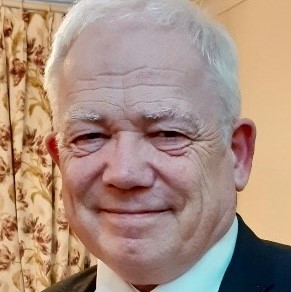
His Honour Judge Thomas Teague KCChief Coroner of England and Wales 
His Honour Judge Thomas Teague KCChief Coroner of England and Wales His Honour Judge Teague KC is the Chief Coroner of England and Wales. He was called to the Bar in 1977, took silk in 2000 and was appointed a circuit judge in 2006. Between 2016 and 2019 he chaired the Anthony Grainger Inquiry, a statutory inquiry into the fatal shooting by a police officer of a member of the public. He has been Chief Coroner since December 2020. The son of a physicist, Judge Teague has a long-standing interest in astronomy and has contributed a number of articles and peer-reviewed papers to scientific journals. The minor planet formally designated 27412 Teague is named after him. He and his wife Helen have two sons and three grandchildren. |
Chair
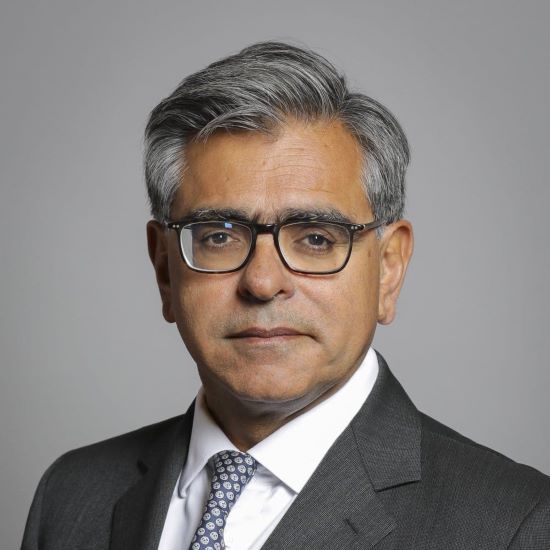
Rt Hon Professor Lord Kakkar KBE PC
President, Thrombosis Research Institute

Rt Hon Professor Lord Kakkar KBE PC
President, Thrombosis Research Institute
Lord Ajay Kakkar is Emeritus Professor of Surgery, University College London, and President of the Thrombosis Research Institute. He is chairman of King's Health Partners, the Office for Strategic Coordination of Health Research, the King's Fund, the UK Biobank and The Royal Commission for the 1851 Exhibition.
He completed his undergraduate medical education at King's College London and received his PhD from Imperial College London. He is a fellow of the Royal College of Surgeons of England, Royal College of Physicians of London, and King's College London and an honorary fellow of the Royal College of Surgeons of Edinburgh and the Academy of Medical Sciences. His research interests include the prevention and treatment of venous and arterial thromboembolic disease and cancer-associated thrombosis.
Lord Kakkar was created a Life Peer in 2010 and sits on the cross benches of the House of Lords. He served as chairman of the House of Lords Appointments Commission from 2013 - 2018. Chairman of the Judicial Appointments Commission from 2016 - 2022. He is a member of His Majesty's Most Honourable Privy Council.
| 16:30-17:20 |
Closing keynote
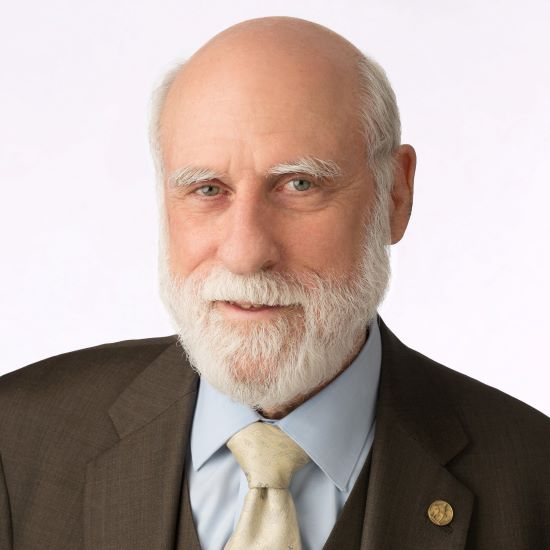
Dr Vinton Cerf ForMemRS
Dr Vinton Cerf ForMemRSVinton G Cerf is vice president and Chief Internet Evangelist for Google. He is the co-designer of the TCP/IP protocols and the architecture of the Internet. He has served in executive positions at ICANN, the Internet Society, MCI, the Corporation for National Research Initiatives and the Defence Advanced Research Projects Agency. A former Stanford Professor and former member of the US National Science Board, he is also the past President of the Association for Computing Machinery and serves in advisory capacities at NIST, DOE, NSF, NRO and NASA. He earned his Bachelor of Science in mathematics at Stanford and Masters and PhD degrees in computer science at UCLA. He is a member of both the US National Academies of Science and Engineering, the Worshipful Company of Information Technologists and the Worshipful Company of Stationers. Cerf is a recipient of numerous awards for his work, including the US Presidential Medal of Freedom, US National Medal of Technology, the Queen Elizabeth Prize for Engineering, the Prince of Asturias Award, the Japan Prize, the Charles Stark Draper award, the ACM Turing Award, the Marconi Prize, the IEEE Medal of Honour, the Legion d'Honneur, the VinFutures Grand Prize and the Franklin Medal. He is a Foreign Member of the Royal Society and Swedish Academy of Engineering and holds 29 honorary degrees. |
|---|
| 17:20-17:30 |
Closing remarks
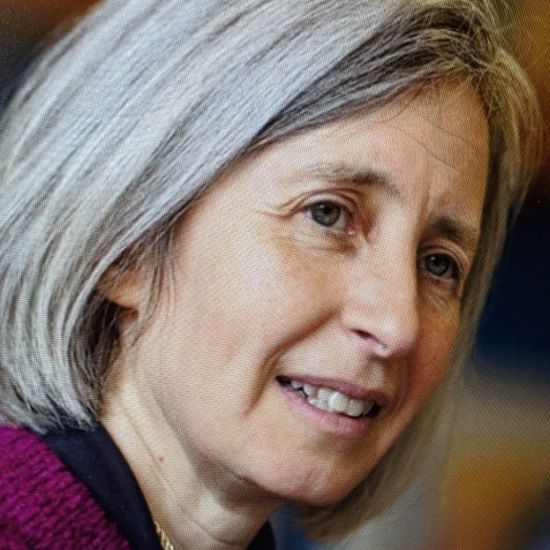
Martha MinowHarvard Law School 
Martha MinowHarvard Law School Martha Minow is 300th Anniversary University Professor at Harvard University and the former dean of Harvard Law School. She is also co-chair of the committee on Science, Technology, and Law at the US National Academies of Sciences, Engineering, and Medicine. An expert in human rights and constitutional law, Ms Minow's recent work includes Saving the News: Why the Constitution Calls for Government Action to Preserve the Freedom of Speech (2021) and When Should Law Forgive? (2019). She also writes and teaches about digital communications, democracy, privatization, military justice, and ethnic and religious conflict. Her current courses include Fairness and Privacy: Perspectives from Law and Probability. She co-chairs the advisory board of the MIT Schwarzman College of Computing, and previously served on the Center for Strategic and International Studies Commission on Countering Violent Extremism, the Independent International Commission Kosovo, and the UN High Commissioner for Refugees. 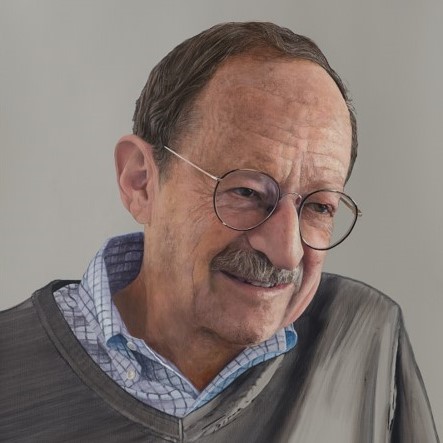
Dr Harold Varmus ForMemRSWeill Medical College, Cornell Unviersity, US 
Dr Harold Varmus ForMemRSWeill Medical College, Cornell Unviersity, US Harold Varmus was co-recipient of the 1989 Nobel Prize in Physiology or Medicine for studies of the genetic basis of cancer, and joined the Meyer Cancer Center of Weill Cornell Medicine as the Lewis Thomas University Professor of Medicine in April, 2015. He is also a Senior Associate Member of the New York Genome Center, where he helps to develop programs in cancer genomics, and an adjunct professor at Columbia University, where he teaches an undergraduate course about the scientific enterprise. Previously, Dr Varmus was the Director of the National Cancer Institute for five years, the President of Memorial Sloan-Kettering Cancer Center for ten years, and Director of the National Institutes of Health for six years. A graduate of Amherst College and Harvard University in English literature and of Columbia University in medicine, he was further trained at Columbia University Medical Center, the National Institutes of Health, and the University of California San Francisco (UCSF), before becoming a member of the UCSF basic science faculty for over two decades. Dr Varmus is a member of the US National Academies of Science, Engineering and Medicine, is involved in several initiatives to promote science and health in developing countries, and serves on advisory groups for several academic, governmental, philanthropic, and commercial institutions. These positions currently include co-chair of the Mayor's LifeSciNYC initiative and member of advisory boards of the Broad and the Crick Institutes, the global health program at the Bill and Melinda Gates Foundation, and two biotechnology companies (Surrozen and DragonFly). Most recently, he has become the chair of the World Health Organization's new Science Council and co-chair of the National Academies' Committee on Science, Technology, and the Law. He is the author of over 400 scientific papers and five books, including a 2009 memoir entitled The Art and Politics of Science (Norton). He was a co-chair of President Obama's Council of Advisors on Science and Technology (2009-10), a co-founder and Chairman of the Board of the Public Library of Science (2003-2010), and chair of the Scientific Board of the Gates Foundation Grand Challenges in Global Health (2001-2003). |
|---|

